















































































































































































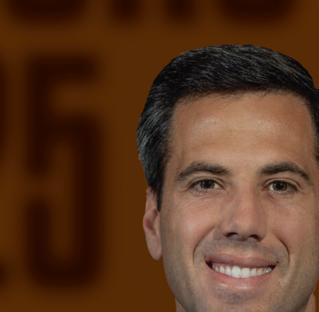



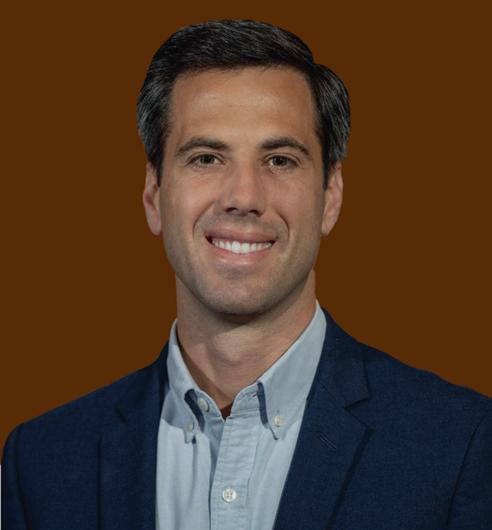








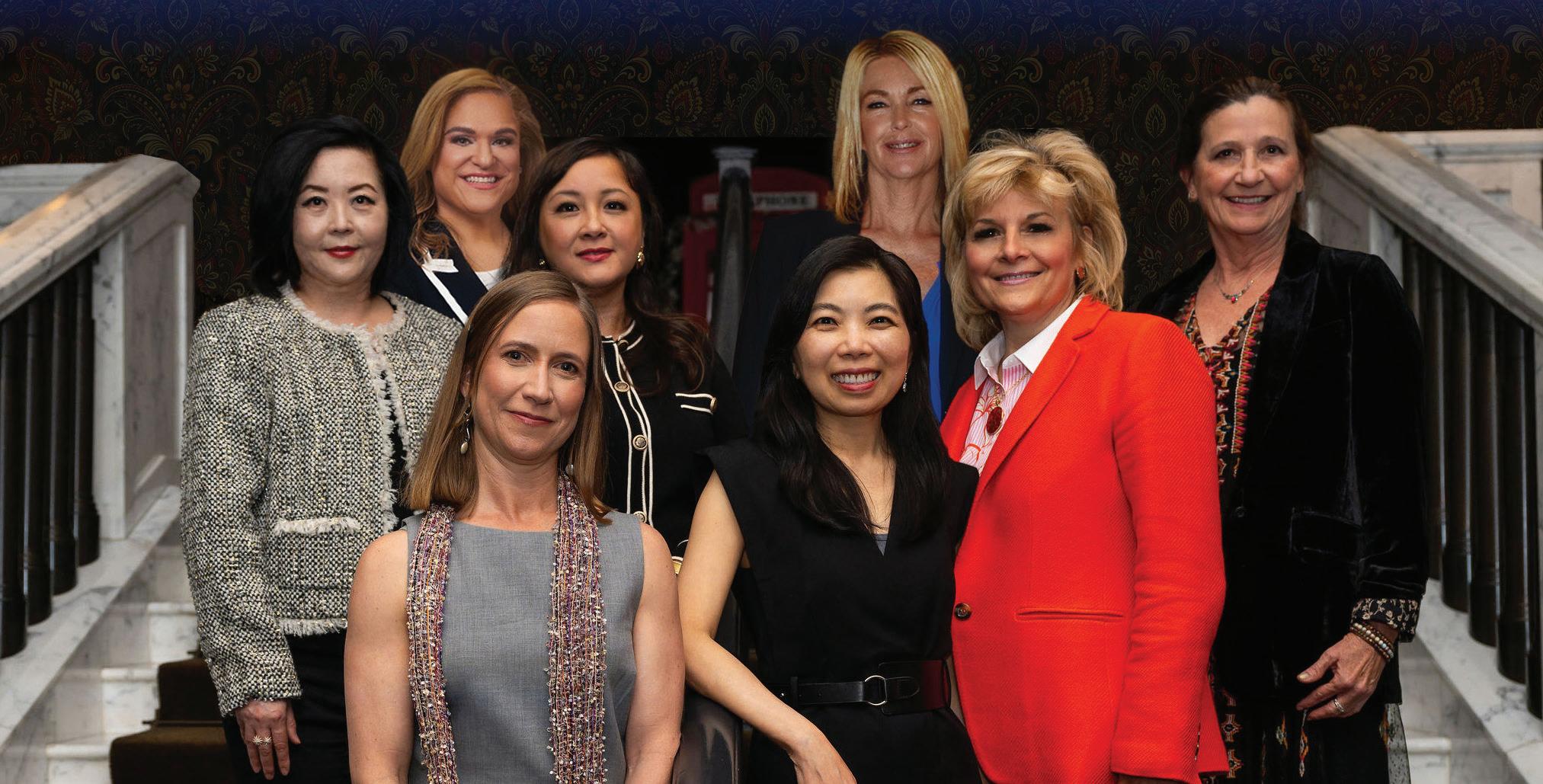
Let us help you get there.
Independent Financial Group, an award-winning independent broker-dealer, is committed to helping its financial advisors amplify their success. With our personalized service team, advisor-led conferences, and acquisition support, we’re here for you every step of the way.

Join America’s Finest Broker-Dealer® Call Julia Kohan at (800) 269-1903 x212 joinus@ifgsd.com ifgsd.com.













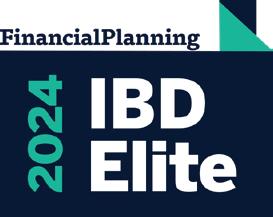






































































































































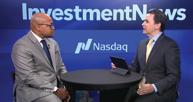


Diversity, equity, and inclusion, or DEI, is not a crime.
Yet the new presidential administration and a group of Republican attorneys general are wasting no time pressuring federal contractors, including major banks and asset managers, to end “illegal DEI” and answer questions that may only result in lawsuits.
The same week the new president was sworn in, state attorneys general sent threatening letters to Bank of America, BlackRock, Citigroup, Goldman Sachs, JPMorgan Chase, and Morgan Stanley. Some of the same rms have been targeted recently for their considerations of environmental, social, and governance criteria. Amid that pressure, all major US banks have withdrawn from climate coalitions, and some asset managers have followed.
Companies have largely stopped using ESG publicly. Whether asset managers will be scared away – or alternatively continue to use all data they see t to make sound decisions – is a bit of a question. Some will see it as their duciary responsibility to do so.
We are about to see how the corporate world responds to the assault on diversity initiatives. With little doubt, things are about to intensify. The easiest response will be to scrap programs outright, but that doesn’t mean doing so is right or responsible.
Among the many, many executive orders the president signed in his recent show of power are at least two that seek to dismantle DEI practices.
One primarily focuses on DEI within the federal government and the other on private business. The latter revoked several prior executive orders from former presidents, including Lyndon B. Johnson’s famous EO 11246, which outlined nondiscrimination requirements within the government and for contractors and subcontractors.
Critically, Johnson’s order included placement goals, but not quotas –already, companies are not allowed to set recruitment numbers to meet af rmative action rules, according
it would bene t everyone to continue promoting diversity and opportunity, in whatever form that takes.
The executive order doing away with EO 11246 is a bullying tactic against employers, wrote Jenny Yang, former chair of the Equal Employment Opportunity Commission, and Pamela Coukos, former senior advisor at the Of ce of Federal Contract Compliance Programs, in a response to the president’s actions.
“Under Title VII of the Civil Rights Act of 1964, employers have long standing obligations to ensure fair
The easiest response will be to scrap programs outright, but that doesn’t mean doing so is right or responsible
to the Department of Labor. Instead, hiring benchmarks can be used to give employers an idea about whether their workforces and contractors re ect the diversity in their communities.
If there are big discrepancies, employers can revise policies that could have the effect of hindering employment opportunities, and they can broaden recruitment and outreach, the DOL wrote in 2023. The regulator also pointed to training and apprenticeship programs that can help workers and applicants in underrepresented groups.
However companies decide to respond to the crusade against DEI,
workplace practices and should feel con dent continuing to use the wide array of established effective strategies for advancing diversity, equity, and inclusion that do not involve explicit consideration of race or other protected traits in employment decisions,” they wrote. “This moment is a critical time for employers to reaf rm their commitments to equal opportunity by investing in the kinds of employment practices that create real change in removing long standing barriers to opportunity.”
We certainly hope that resonates in the nancial services business.
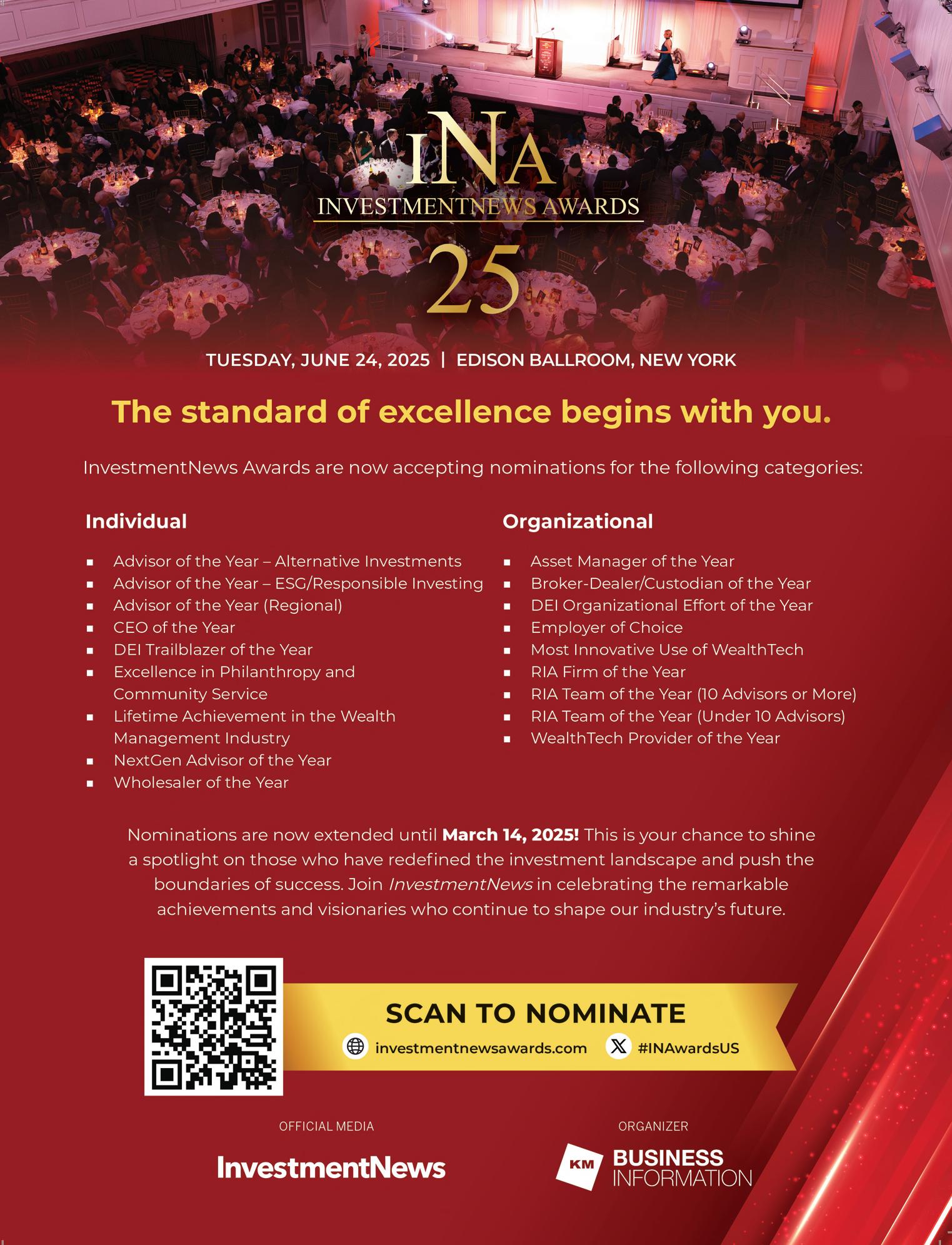
In a Schwab survey of high-net-worth Americans, nearly all millennials said they want to give at least part of their wealth to the next generation during their lifetimes.
Among the 37 percent of advisors who expect to retire or become less involved in their practices in the next decade, over a quarter still don’t have a de nite succession plan.
Among advisors with less than a 10-year horizon:


I want to preserve my money for the next generation or others after I pass 32%


I want the next generation to enjoy my money while I’m still alive 53%

unsure of what their succession plan will be as they transition have identified an advisor within their practice as their successor plan for an external sale (especially common among independent RIAs) 26% 26% 14%

2024 was the most active year in history for wealth management M&A, with 366 RIA deals – including 50 involving direct private equity investments – marking a 14 percent annual increase in transaction volume.

Source: US Advisor Metrics 2024: Adding Services to Scale, the Cerulli report, published January 2025



Among the top 10 states with the highest number of CFP holders, California holds a commanding lead. The latest gures from the CFP board show more than 10,000 CFP professionals hailing from the Golden State, with Texas and Florida each being represented by just over 7,000 CFP certi cants.












Source: Charles Schwab High Net Worth Investor Survey, published December 2024




























John Thiel is only the latest in a line of one-time senior executives at wirehouses who have crossed Wall Street and are now working for the competition
BY BRUCE KELLY
Add John Thiel to the long and growing list of senior executives at the top wirehouses who have crossed Wall Street to work with the direct competition, registered investment advisors and RIA aggregators – and, in the process, are potentially making themselves much wealthier.
It would be hard to find another executive who embodies the spirit of the old Merrill Lynch, dubbed the Thundering Herd, more than Thiel, who started at the firm in 1989 as a financial advisor, according to his LinkedIn profile.
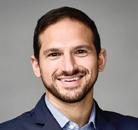
“John had an awesome reputation at Merrill, with so many financial advisors and senior executives loyal to him,” said Louis Diamond, an industry consultant.
“He really was the last of the old school there. You couldn’t get more Merrill Lynch than John Thiel.”
Now, Thiel, like so many of his former senior wirehouse brethren, is back in the financial advice business, but on the other side of the street.
Based in Pittsford, New York, Woodring/LeRoy has assets of $640 million, according to an announcement from Indivisible Partners. Lee Woodring, founding
“John had an awesome reputation at Merrill, with so many financial advisors and senior executives loyal to him.... You couldn’t get more Merrill Lynch than John Thiel”
LOUIS DIAMOND, INDUSTRY CONSULTANT
He rose through the ranks and, from 2011 to 2016, Thiel was head of Merrill Lynch Wealth Management; then he was vice chair of global wealth management and investment management at Bank of America until 2018, when he left the firm.
Thiel has launched an RIA, directly competing with his old firm. In November, he announced he was opening Indivisible Partners, based in Clearwater, Florida. And at the start of the year, Thiel, the firm’s founder and executive chairman, said it had recruited its first team of financial advisors, Woodring/LeRoy Capital Advisors.
and managing principal, and Robert LeRoy, founding principal, are both Merrill Lynch veterans. The former was a financial advisor at Merrill from 1996 to the start of this year, and the latter started at Merrill in 2010 before leaving in January.
Thiel did not return phone messages for comment on this article.
Executives like Thiel, and the financial advisors who join such startups, often get another bite of the apple when they lead or join an RIA or RIA aggregator; the private equity-backed or back-owned firms may reward leaders and advisors with equity, which can

turn into a significant payday when the new firm is eventually sold, either in whole or in part.
Wirehouses control tens of thousands of financial advisors who, on average, generate the most annual revenue per advisor in the financial advice industry.
Merrill Lynch, Morgan Stanley, and UBS do not allow their financial advisors to work as independent advisors, who typically earn a larger percentage of revenue than advisors at wirehouses. Owners of RIAs also enjoy tax benefits that advisors who are employees do not.
Wells Fargo Advisors is the only wirehouse to attempt to build a significant independent brokerage and custodian business.
“You have executives like Thiel and others no longer at big banks or wirehouses, but they still have almost countless relationships with financial advisors,” said Larry Roth, managing partner at RLR Strategic Partners. “Those senior executives know what those wirehouse advisors need and want.”
“Plus, there’s so much capital to start a new firm with the plan of hiring experienced advisors,” Roth said. “Those executives can go to the private equity managers – and you bet they will listen, particularly if it’s a management team who can execute a strategy.”
“Some of those firms have taken off like a rocket,” he added.
Thiel is joining a crowded field of new wealthmanagement firms that are led by former wirehouse executives.
Greg Fleming, a former senior leader at both Merrill

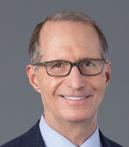
“Some of those firms have taken off like a rocket.... Those senior executives know what those wirehouse advisors need and want”
LARRY ROTH, RLR STRATEGIC PARTNERS
Lynch and Morgan Stanley, is CEO of Rockefeller Capital Management. The firm was a longtime family office that Fleming relaunched in 2018 into the broader wealth management market and that, since then, has hired dozens of wirehouse financial advisors.
At the end of December, the firm was responsible for $151 billion in client assets across its three businesses, Rockefeller Global Family Office, Rockefeller Asset Management, and Rockefeller Global Investment Banking.
And such firms are creating value for shareholders and investors. In 2023, Rockefeller Capital Management said it had sold a 20.5 percent stake for $622 million, putting a valuation on the firm of about $3.1 billion.
And Rockefeller is just one example. Other notable and recent startups led by executives who cut their teeth at the wirehouses and are now hiring those same advisors include Sanctuary Wealth, with close to $50 billion in assets, and NewEdge Capital Group, which works with about $65 billion in client assets.
And the list of big names goes on.
“The thesis for new firms led by wirehouse veterans
is simple,” Diamond said. “The wirehouse advisors want to work in and move to the independent RIA side of the industry, but they don’t want to do it alone.”
“What matters for these new firms is how much traction they get in recruiting financial advisors,” Diamond said.“A firm can have the best business plan or technology, but it doesn’t matter if it can’t recruit advisors.”
The president may be the same as he was before, but circumstances are different this time around – and there are some
lessons from the first term, advisors say
BY GREGG GREENBERG
Past performance does not guarantee future results. The disclaimer remains the same at the bottom of the advertisement or end of the commercial, no matter the name of the financial advisor – or the president of the United States.
The Dow Jones Industrial Average returned 57 percent during Donald Trump’s first presidency from 2017 to 2021. The Dow’s performance represented an annualized gain of 11.8 percent for the index, the best performance for any Republican president since Calvin Coolidge back in the roaring ’20s, according to LPL.
The S&P 500, meanwhile, rose 70 percent during Trump’s first go-round, or 14.1 percent annually. Leaving party comparisons and credit aside (it’s not a contest, folks – or at least not here), those gains are not too shabby. In fact, Republican and Democratic presidents alike would not hesitate to proudly post those returns on the White House refrigerator.
Nevertheless, Trump’s January inauguration ushered in a clean slate. The returns were great while they lasted, but they are now history. Time to wave bye-bye to the past and move on.
The big question facing investment professionals now is whether history – at least when it comes to the stock market – will rhyme, repeat, or wheel off in a brand-new direction in Trump’s non-consecutive second term. Because while past performance won’t guarantee future results, the investing world can’t wait to know the answer – and simply won’t stop guessing.
TRUMP 1.0 VS. TRUMP 2.0
One method for valuing a stock is measuring it against comparable companies, or “comps,” to use the Wall Street lingo. Now that Trump is back in office, the easiest Trump 2.0 market comp for investment managers to make is to the man himself back in Trump 1.0.
Brian Storey, head of multi-asset strategies
at Brinker Capital Investments, said the guiding vision and overarching policy objectives are largely the same. The impact of the second Trump administration on financial markets could be similar to the first, maybe even with additional upside, due to the increased experience of the team around him.
“With a more focused, more experienced, and more ‘professional’ administration, it’s likely that the new Trump administration will more effectively translate his policy objectives into action,” Storey said.
Jim Thorne, chief market strategist at Wellington-Altus, said he expects a “more moderate” approach this time, offering as evidence the wide range of political voices and backgrounds
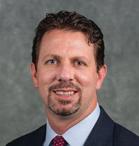
debt was significant, it wasn’t as urgent a concern as it is today. Now, persistent inflation, higher borrowing costs, and an escalating federal deficit could create significant headwinds for any pro-growth policies, like corporate tax cuts or infrastructure spending, limiting their overall effectiveness,” said Robert Gilliland, managing director and senior wealth advisor at Concenture Wealth Management, a partner firm of Sanctuary Wealth.
From a market perspective, Gilliland said industries such as defense contractors, energy producers, and construction firms might benefit. However, sectors tied to global supply chains or sensitive to trade policies could face increased uncertainty, especially if protectionist measures return, he said.
“The bond market would also likely attract significant attention. Larger deficits and an inflationary environment would make the Federal Reserve’s balance sheet strategy a key focus for investors,” he said.
From a timing standpoint, Tom Graff, chief investment officer at Facet, noted that the first Trump administration came amid reflation and on the heels of an energy-based “mini-recession” in the industrial economy, a far cry from where it is now.
“In 2025, the economy is already quite strong, perhaps too strong, given stubbornly high inflation. This is a key difference between the first and second Trump administrations that isn’t getting as much attention,” he said.
As for the economic, business, and tax policies likely to emerge, wealth managers target deregulation as the most significant, not just for the market, but for their businesses as well.
Wellington-Altus’s Thorne, for one, created his own acronym, “DOGE,” when it comes to Trump
“With a more focused, more experienced, and more ‘professional’ administration, it’s likely that the new Trump administration will more effectively translate his policy objectives into action”
BRIAN STOREY, HEAD OF MULTI-ASSET STRATEGIES, BRINKER CAPITAL INVESTMENTS
in Trump’s cabinet.
“This moderation contrasts with the Street’s perception of Trump as radical, while it was actually Biden’s policies that were more extreme. Once the market recognizes this reality, we can expect a significant bull rally in stocks and a decline in interest rates,”Thorne said.
Other investment managers say the president may not have changed, but the economic environment, most notably the size of the deficit, sure has. And that could be constraining to a president who does not like to be constrained.
“Back then, inflation was historically low, interest rates were near rock-bottom, and while the federal
2.0 policy, and it doesn’t stand for Department of Government Efficiency, the name of Trump’s newly created agency. Thorne’s DOGE is short for: deregulation, oil and gas expansion, growth, and economic stability.
“These policies are expected to usher in an era of robust, non-inflationary private-sector growth,” Thorne said.
Todd Walsh, CEO and chief technical analyst at Alpha Cubed Investments, said deregulation could result in lower compliance costs and greater operational flexibility in the financial industry.
“Deregulation signals a more favorable business climate, encouraging investor confidence in higher

earnings potential and expanded opportunities for risk-taking, especially in the banking sector,” said Walsh, adding that he also anticipates reduced capital requirements under international banking regulatory accord Basel III and an increase in M&A activity under Trump 2.0.
Tax policy will also be scrutinized by the investment management community. Corporate tax cuts could provide an immediate lift to earnings, yet changes in personal income tax brackets, estate tax exemptions, and capital gains treatment could have a far-reaching effect on individual investors.
Concenture’s Gilliland, for one, said many of his clients are already exploring estate planning and tax-efficient strategies to prepare for these potential shifts.
SAME AS THE OLD STRATEGY
Meet the new president, same as the old president (to paraphrase a line from a Who song.) And for most financial advisors the strategy remains the same (to bend a Led Zeppelin title).
“No major changes to investment portfolios are necessary, as preparations for a Trump victory have been in place since early 2024,” Thorne said. “This forward-thinking approach has positioned investments to capitalize on the anticipated economic environment under the second Trump administration.”
Rather than making dramatic shifts in anticipation of political changes, Gilliland said he is focusing on a “balanced approach.”
“We believe in reinforcing the core strength of portfolios through broad diversification, disciplined risk management, and tax efficiency,

“In 2025, the economy is already quite strong, perhaps too strong, given stubbornly high inflation. This is a key difference between the first and second Trump administrations that isn’t getting as much attention”
TOM GRAFF, CHIEF INVESTMENT OFFICER, FACET
or fundamental principles that remain unchanged regardless of who’s in office,” Gilliland said.
Finally, Graff said he has not made any changes to portfolios strictly because of anticipated Trump policies. Still, he does think there are some areas of increased risk or opportunities.
“Emerging markets are especially vulnerable to a trade war. We were already underweight for other reasons, but Trump’s election certainly increases the risks there. We also like mid-cap stocks, mostly because they are the least expensive part of the market that could benefit from a broadening of earnings growth,” he said.
Financial services companies are being targeted for potential legal action over their programs and initiatives on diversity, equity, and inclusion. It could be just the beginning
BY EMILE HALLEZ
Several days into the new Republican administration, a coalition of state attorneys general sent letters to a group of prominent financial services companies: Bank of America, BlackRock, Citigroup, Goldman Sachs, JPMorgan Chase, and Morgan Stanley.
They were asked, not so subtly, to open up about any DEI initiatives at their respective companies.
“Your answers to the attached questions, along with interviews of relevant employees, will demonstrate whether violations have occurred, whether they will continue, and the necessity of enforcement actions to vindicate federal or state laws,” the letters read. “Each of you appears to unlawfully advance discriminatory employment quotas.”
The messages came just after President Donald Trump signed a flurry of executive orders, two of which were aimed at widely curbing practices that promote diversity. One promises to end all diversity, equity, and inclusion work and initiatives within the federal government. Another would end it for federal contractors and reverses a 1965 order by former President Lyndon Johnson that sought to bolster civil rights protections by instructing federal contractors not to discriminate against employees or job applicants.
“What the order is going after is the application of preferences based on race and gender,” said Samia Kirmani, principal at law firm Jackson Lewis and co-leader of the firm’s corporate diversity counseling practice groups. Parts of that executive order, entitled “Ending illegal discrimination and
restoring merit-based opportunity,” conflates illegal practices with DEI in general, she said.
“The law hasn’t changed as a result of the executive orders. It’s always been unlawful to discriminate,” she said.
And that, similarly, hasn’t changed what she recommends companies do, which is to assess what their DEI practices are, how they describe them, and how they implement them, she said.
“How are organizations communicating to their employees [and] externally to all their stakeholders, about what they’re doing? Using shorthand allows for assumptions to be made,” she said.
In future, “there is going to be a lot more specific language,” she said.“That recommendation is not new.”
The companies targeted by the Republican state attorneys general did not comment on the inquiries or their DEI policies.
However, the ways in which companies identify any programs are potential risks. That has been the case since the US Supreme Court in 2023 ruled against Harvard University and the University of North Carolina over the use of affirmative action in admissions – a decision seen as having a chilling effect extending to the corporate world.
There are signs of forthcoming legal fights over so-called reverse discrimination, in which people in majority groups – white, straight, male – allege they are denied opportunities by virtue of not being part of a minority group.
For example, Stephen Miller’s America First Legal has brought numerous cases against

employers and government offices and filed cases with the Equal Employment Opportunity Commission. Trump’s appointed acting chair of the EEOC, Andrea Lucas, hinted at being open to hearing such claims.
“We must reject the twin lies of identity politics: that justice is measured by group outcomes and that civil rights exist solely to remedy harms against certain groups,” Lucas said in an announcement of her appointment. “I intend to dispel the notion that only the ‘right sort’ of charging party is welcome through our doors.”
It is likely that private companies could face investigations over their DEI practices, Kirmani said. That could extend to mentorship or development programs that are restricted to gender or race, for example, she said.
“We can’t just look at the executive orders in a silo. The EEOC has also made clear what its


“The law hasn’t changed as a result of the executive orders. It’s always been unlawful to discriminate. What the order is focused on is the application of preferences”
SAMIA KIRMANI, JACKSON LEWIS
priorities are going to be,” she said. Even so, DEI programs and initiatives are not by themselves illegal, and they may help companies comply with the law. DEI practices are widespread in the corporate world and have been viewed as important in promoting diversity, so much so that academic programs have been designed around them. In 2023, the Wharton School started offering DEI as a major for its MBA program.
Widely, Americans support diversity but don’t like being divided by race, said Robert Raben, executive director of the Diverse Asset Managers Initiative.
The Supreme Court’s ruling, while it narrowed what race can be used for in applications, did not strike down considerations around race entirely –something that critics of DEI get wrong, he said.
“What the right has done is mischaracterize
that ruling. Instead, they talk about what they want … which is race not being taken into account,” he said. But “race has been taken into account for 400 years… That’s why 95 percent of CEOs and chairs of boards are white.”
Conversely, if companies will be forced to say whether they curate by race, those that are almost entirely white and male will have to explain that, he said.
On the new administration’s pushback, “there’s nothing new here,” he said. “Generation after generation, we see continual progress on diversity generally, and fantastic pushback.”
What is new is calling out DEI without defining exactly what it is, he said.
“They have picked a concept, DEI, which has no scientific, HR, or legal definition. And they keep saying it’s terrible,” he said. “And we don’t know what to do with that, because the next sentence
Immediately after being sworn in, President Donald Trump began signing hundreds of executive actions, including at least two major orders aimed at dismantling DEI practices in the government and beyond.
Ending Radical and Wasteful Government DEI Programs and Preferencing
• Reverses an executive order by former President Joe Biden that required equity action plans within the federal government
• Directs the Office of Management and Budget, attorney general, and Office of Personnel Management to terminate “illegal DEI” programs “under whatever name they appear”
• Requires agency, department, and commission leaders to provide names of programs and contractors who trained workers, including for environmental justice initiatives
Ending Illegal Discrimination and Restoring Merit-Based Opportunity
• Agencies are directed “to combat illegal private-sector DEI preferences, mandates, policies, programs, and activities”
• Revokes five prior executive orders or presidential memoranda around diversity and environmental justice, including the 1965 order for equal employment opportunity
Sources: https://www.whitehouse.gov/presidential-actions/2025/01/ending-radical-and-wasteful-government-dei-programs-and-preferencing/ https://www.whitehouse.gov/presidential-actions/2025/01/ending-illegal-discrimination-and-restoring-merit-based-opportunity/

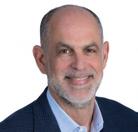
“Generation after generation, we see continual progress on diversity generally, and fantastic pushback”
ROBERT RABEN, DIVERSE ASSET MANAGERS INITIATIVE
they say is, ‘We want to get to merit,’” which could be read as implying that people in minority groups are not viewed as qualified. “They’re threatened by the inclusion of women or people of color … in the elite levels of the talent pool.”
In response to the pushback, company leaders appear to fall into three categories, he said. They either continue their efforts under a different name, they quit whatever initiatives they had because they never wanted them, or they support diversity but don’t know what to do, he said.
Some evidence of what may come is highlighted by California’s Proposition 209, a 1996 ballot measure that outlawed affirmative action in public employment, education, and contracting, he noted. Shortly after that was passed by voters, underrepresented groups dropped in enrollment at
the University of California. However, in the years since, and with Proposition 209 still in effect, racial diversity in enrollment has improved considerably. Within the financial advice profession, it appears diversity is improving. Last year, “the number of racially and ethnically diverse CFP professionals surpassed 10,000 for the first time, increasing to 10,239 (9.9 percent of all CFP professionals) and signifying a growth rate of 8.8 percent – twice the overall growth rate of all CFP professionals,” a spokesperson for the CFP Board said in a statement. The number of CFP professionals who are Black has been growing by roughly eight percent per year since 2020, reaching 1,936 people in 2024, according to the board. Still, that represents 1.9 percent of all CFPs, 81.8 percent of whom are white, 2.6 percent Latino, and 3.8 percent Asian.




































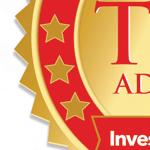



















































IT HAS BEEN a trying time for advisors across the United States, with geopolitical uncertainty, low interest rates, and a fractious election all creating waves. The best advisors have had to reassure clients and devise ways to navigate through these waters.
Dave Goodsell, executive director at the Natixis Center for Investor Insight, underlines the dif culties in ner detail.
He says, “Investment assumptions are being tested by lower in ation, lower rates, and slowing growth; clients are demanding more specialized
services while holding high expectations for investment performance; and portfolio construction is becoming more complex as advisors adopt a wide range of new products and look to incorporate private investments in their strategies.”
Performing in this environment showcases the skills of InvestmentNews’ Top Advisors 2025, who were nominated by industry insiders and then recognized for their AUM and client growth.
As a cohort, between August 2023 and August 2024, the Top Advisors have delivered a combined:
Some of those honored by IN reveal what makes them stand out among a competitive and crowded advisor market.
The Top Advisors are quick to admit they have relied on their teams’ expertise and support to enable their outstanding performance. That team ethic, along with an appreciation and use of technology, is a commonality. What separates the best is their ability to master client communication and the emotional side of the business.



Jeff DeHaanClearwater Capital Partners

AUM growth: 28 percent
Client growth: 8 percent
Location: Ho man Estates, IL
The managing partner of the rm’s private wealth management business line puts his success down to ensuring clients are comprehensively catered for.
“It’s not taking the easy or quick answer, but really digging in with our client families, getting to know the ins and outs of the totality of their nancial world, so that we can make the right recommendations to them from a broader context. We want the right answer, not the quick and easy one, so that our clients have the best chance of success possible,” says DeHaan.
While stationed in Afghanistan’s Helmand Province, Lauzen ew 127 combat missions as a light attack helicopter pilot for the US marines. This is the mindset he brings to the table with his clients today.
He says, “One of the things I loved in that role was being able to bring stability, show up on the battle eld, and build con dence in the folks that they were going to get out safely. There is a similar value set with being in the trenches with folks on the private wealth management side. We’re always in the boat with our clients, and it’s incredibly important for folks to have trusted, hardworking, and smart advisors in the tough times.”
everybody’s got some investment strategy. But we constantly ask, what’s the extra that we can provide? We do a tremendous amount of thinking outside the box and around the corners for the things that clients haven’t seen or thought of.”



AUM growth: 26 percent
Client growth: 18 percent
Location: San Diego, CA





Ted LauzenGrey Fox Wealth Advisors


AUM growth: 67 percent
Client growth: 90 percent
Location: Rockland, DE
McCormick’s difference marker is working with a team and studying how they can re ne their operations.
“I’ve got two associates who are integral parts of my team. One thing that sets us apart and helps our growth is that we spend a lot of time thinking about processes and how we can make things more ef cient,” he says.
“I have always viewed the competence of an advisor and access to investments to be table stakes. Everybody’s got letters after their name,











Tim DiSette –Infinitas LLC
AUM growth: 48 percent
Client growth: 16 percent
Location: Overland Park, KS

Growing up in a farming family business shaped his outlook and values, which are the bedrock of DiSette’s success.
He says, “I grew up working alongside people in a manufacturing and agriculture type of environment. I always felt that starting out working side by side with real people who work hard for a living every day, since the time I was about 12 years old, instilled a little bit of compassion for people who work hard every day, and I have translated that over to managing their money.”
“I tell clients upfront, I expect to be working with you for years, if not decades, to come. I want to make sure it is a good t and sometimes it isn’t, so we shake hands and part as friends.”
DiSette is clear with all clients that his rm is a cash- ow-based nancial planning operation that looks holistically at every aspect of its situation, including estate planning, charitable planning, investments, insurance, and whether they have a business. While that remains stable, he has been able to grow by engaging external consultants.
“When you feel like you’re hitting that ceiling of complexity, whether it be with a nancial planning process and you need to evaluate some new technology, or from a marketing process, you need to get a second opinion,” he says.
The most recent review, which has driven recent growth, helped DiSette’s rm re ne work ows and its onboarding process for new clients.



Gregory Guenther –GRANTvest Financial Group


AUM growth: 34 percent
Client growth: 133 percent
Location: Matawan, NJ
Guenther, a broad-based nancial planner with a special emphasis on comprehensive nancial and retirement planning, admits his family and friends think he’s “a nerd and workaholic.” Caddying at a golf country club exposed him to nance and formulated his approach.
“I just love to educate people and help them do better in life. It’s my goal to help clients achieve nancial comfort and freedom through strategy and planning. I want to bring common sense nancial advice that can be implemented into my client’s daily lives,” he says.
Early to spot opportunities, McCormick brought on another partner last year after realizing that he and his other advisors were reaching capacity.
“In order to continue our level of service, we needed to bring on a really good third partner, and it took nine months of looking and interviewing,” he says.
Around 75 percent of the rm’s clientele are nearing retirement, with the remainder being young professionals. Taking on a new client is as carefully thought out for McCormick as hiring new staff members. This considered approach enables him to keep delivering and boosting his reputation.
“I measure potential clients not necessarily by their assets. They might not be a good t if they’re looking for a service that we don’t offer, or I just don’t think it’s going to be a good personality match. I’m a big believer in clients for life. We don’t lose clients unless they pass away,” McCormick says.
He says, “I don’t work with other nancial planning rms. There’s a lot of great rms, but I don’t know how they do it. But an external consultant can give you a great perspective, see your blind spots, and teach you how to overcome those.”
The cornerstone of Lauzen’s growth has been a focus on a high, responsive service. He says, “It is taking care of people spectacularly well and far exceeding expectations on a day-in and day-out basis, which continues to build the long-term trajectory.”
Part of this has been adding new advisors who can offer Lauzen support and bring ef ciencies. But he admits it has been challenging to nd smart, hardworking candidates who enjoy the process of diving in and tackling problems.
“These aren’t knick-knacks being sold. These are the hard-earned assets of a lifetime, and often multigenerational lifetimes of effort. So, it’s a distinct privilege to be able to shepherd growth over time,” he says.
While growth is positive, it does open up another set of challenges.
“It’s one of the double-edged swords of success. I never want my clients to suffer because of the success I’ve had or because I’m good at what I do,” shares DeHaan. “Managing growth is one of the hardest things that any business has to do and making sure that we can maintain the standard we expect of ourselves, let alone what our clients expect.”
Outside of ef cient processes and value-adding tech, DeHaan is meticulous in adding new advisors and is adamant that they need to appreciate the standards they should offer to clients.
He says, “There are two non-negotiables when we’re hiring; one is character. I have to be able to trust them and be comfortable that if I were the client and were passed to this new person, I would trust them to take care of my family. If not, then they’re not taking care of our client family. Character is huge for us, and then the other side of it is competency.”
Being relatable and connected with clients is also something Guenther draws on. He puts his growth down to a trifecta: organically from current clients and their family referrals, online branding and marketing, and building key relationships with centers of in uence.
Guenther adds, “I implement a listen- rst approach, which leads to asking thoughtful and insightful questions.”
















To compile the second annual Top Advisors list, InvestmentNews rst solicited nominations from advisors, industry professionals, and clients. Only advisors nominated were eligible for the list. All information on the nominees had to be veri ed by their compliance team before it could be accepted.
The nal list was determined based on each advisor’s weighted ranking in overall AUM, AUM growth, and client growth (between August 2023 and August 2024). The InvestmentNews team assigned a ranking to each advisor in each category and then calculated a combined score to determine the advisor’s nal placement on the 2025 Top Advisors list.





“In today’s age of technology, we would not be able to be the financial planners we are if [we] didn’t have younger people around [us] with great technical skills when it comes to technology”

TIM DISETTE, INFINITAS LLC





“I always like to tell clients, I shouldn’t care more about your money than you do. It’s important that your advisor cares about it, but it’s really important that you care about it”

WAYNE MCCORMICK, MCCORMICK INSURANCE SOLUTIONS







DeHaan is quick to acknowledge how the last 12 to 18 months has been a trying time. He has made a concerted effort to support clients and enable them to block out the noise of political and social upheaval by reminding them that their nancial plan is still being executed.
He says, “There’s a lot on people’s plates to digest. We’ve been feeling that with our client base [we’re] just having to do a little bit more hand holding, even though things are going really well from a market perspective.”
And he continues, “A lot of our clients are experiencing record years for their businesses and yet there’s still this overshadowing feel of negativity. It’s easy to miss those good things if you’re so focused on the bad things, but we’re there to tell them, ‘Here’s where we are, here’s where that means you need to get to, and here’s how we’re going to get there.’”
DiSette has opted to ensure client satisfaction by running a diverse and adaptable structure. He’s done this by ensuring part of his team is younger, including his two sons, and brings a fresh perspective.
“I think a majority of my clients would say that they almost prefer working with the younger people in our organization,” he says.
The key to the strategy is the rm rarely manages clients singularly.
“It means they really understand our approach and there are multiple relationships in the organization with people with different skills,” explains DiSette.











In McCormick’s of ce, a weekly meeting is held on Tuesdays to discuss processes.
“Nothing is off the table, there’s no process that’s above scrutiny, and we have a clearly de ned process to analyze our processes. In the meetings, we ask, ‘What’s going on in the markets? What are our forecasts? What’s going on with the election? What’s going on with the Fed? Are there any developments in the insurance world or estate planning?’ We make sure that we’re all speaking with a consistent message.”
While it may be time consuming to keep adjusting, it actually makes things run more smoothly.
McCormick says, “Those baseline processes allow us to not get mired in the weeds when a client has a very speci c request or a speci c need. We’ve got the bandwidth to be thinking about that ahead of time for them because we’re not spending all of our time on the basics of running a nancial services rm.”
Ensuring a consistent culture is also important for Lauzen, who embodies the rm’s values, which extend to competence, care, and people who are excited to work hard for others.
“It’s in the service to others that I think we really capture the intent of long-term nance of building for others,” he says.
This extends to leaning into situations where clients may have tricky problems or situations to unpick.
“At Grey Fox, we love to take responsibility for that hot potato and say, ‘Hey, I’m going to take this. I’ve got the skill and the enthusiasm to take responsibility for this and to get it done for the person.’”

































































Phone: 302 482 3211 Email: info@greyfoxwealth.com
greyfoxwealth.com


Phone: 603 945 3308 Email: wayne.mccormick@stewardpartners.com


McCormickWealth.net


























78






















Lido Advisors’ Jason Ozur on keeping it all in the family office
ONE NEED not be a descendant of the Vanderbilt, Carnegie, or Rockefeller dynasties to receive sophisticated financial service anymore. Nor does one need to reside in historically wealthy enclaves like Palm Beach, Newport, or Napa Valley.
Jason Ozur, CEO of Lido Advisors, is making sure of that by taking his family-office model coast to coast and everywhere in between.
Since joining the firm in 2009, Ozur has leveraged his previous experience in accounting and investing at a family office to grow Lido from a Los Angeles-concentrated RIA to a nationally known and respected high-net-worth wealth manager. At last check, Lido boasted more than 300 employees across 33 offices nationwide and $29 billion in assets under management, up from $19 billion at the start of 2024.
Of course, a little infusion of private equity money to fuel that growth didn’t hurt. In May 2021, Charlesbank Capital Partners, a private equity firm based in New York and Boston, took an undisclosed, yet “significant,” stake in Lido. At the time, Lido was managing a little more than $9 billion.
Still, the multi-generational money management and tax-planning strategies advanced by Ozur provided the model for expansion.
After starting his career as a CPA performing audits and preparing tax returns, Ozur joined a large family office, where he was on the team that managed the family’s substantial investments and served as CFO of its international water conservation company.
“This experience shaped my approach to client relationships at Lido,” Ozur said. “It taught me the importance of tailoring strategies to each family’s individual circumstances and coming to every meeting without preconceived notions. Recognizing and respecting the uniqueness of each family ensures that we provide truly personalized solutions and build meaningful, lasting relationships.”
START BY CRUNCHING THE NUMBERS
His CPA background provided a foundation for transitioning into wealth management, as the accounting profession instills in its practitioners a deep understanding of fiduciary responsibility. Further, CPA training in areas such as financial statements, financial planning, estate planning, and taxation offers an advantage in understanding the complexities of wealth management.
BY GREGG GREENBERG
Perhaps most importantly, conducting audits and preparing tax returns for investment partnerships gave him early exposure to the intricacies of the financial world, which proved invaluable throughout his career and eventually shaped his vision for Lido.
“This experience highlighted the importance of alternative investments, and I came to believe that true differentiation for clients lies in having the expertise to offer bespoke alternative investment
“Recognizing and respecting the uniqueness of each family ensures that we provide truly personalized solutions and build meaningful, lasting relationships”
opportunities tailored to their needs,” he said.
Additionally, years serving clients taught him that the greatest assets of any firm are its people and culture, an idea too often overlooked in the financial services industry.
“I envisioned building a firm where ownership was not concentrated in the hands of a few but distributed among the many who contribute to its success,” he said. “Today, we have over 100
Homebase: Los Angeles
$29 billion in regulatory assets under management
300-plus employees
33 offices nationwide
shareholders, and that number grows annually, as we help finance equity purchases for our team members, fostering a culture of shared ownership and commitment.”
Working in a family office informed his approach to everything he tries to achieve at Lido, he said. Foremost, he gained an understanding of family dynamics, including the unique perspectives and priorities of generation 1 (G1) and the younger generations (G2 and G3), and the nuances of navigating among their different needs and perspectives.
Attending family office conferences reinforced in him a crucial insight: “When you’ve seen one family office, you’ve seen one family office.”
And while the term “family office” has become ubiquitous, often to the point of commoditization, Ozur said Lido’s holistic and centralized version is different from other RIA wannabes professing to offer white-glove client service.
“Our key differentiator is the integration of essential services directly accessible to our clients through what we call the Lido One model. This comprehensive approach incorporates wealth management, financial and estate planning, tax consulting and preparation, trust services, and a proprietary investment platform offering both traditional and alternative investments,” he said.
Ozur readily admits Lido’s partnership with Charlesbank Capital has been transformative, extending far beyond financial support. He praises
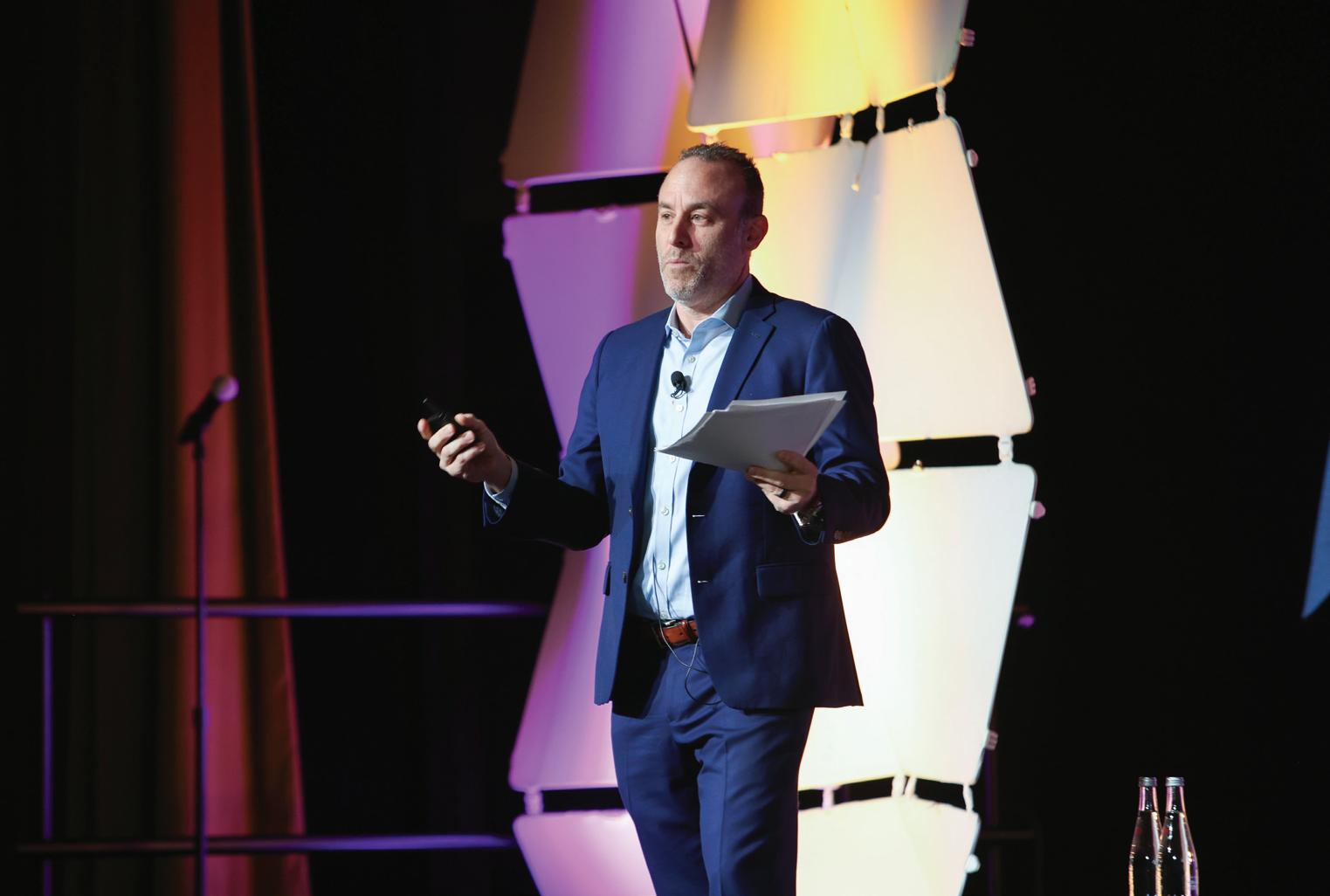
“When you’ve seen one family office, you’ve seen one family office”
Charlesbank’s ability to bring expertise and sophistication to help Lido enhance operational efficiencies, explore organic and inorganic growth opportunities, and refine staffing strategies.
“Over time, these connections have grown into genuine bonds that we believe will endure well beyond their investment in Lido,” he said. “Charlesbank’s involvement has truly elevated the way we do business, strengthening our ability to deliver exceptional service to our clients while positioning us for sustained growth.”
Geographically, Charlesbank’s support has enabled Lido to expand its footprint in places most high-net-worth wealth managers fly over.
In October 2024, for example, Lido extended its presence in the Midwestern market by acquiring Pegasus Partners, a Mequon, Wisconsin-based firm with more than $3 billion in assets. That deal came soon after Lido’s move into the mountain states with the acquisition of Platte River Wealth Advisors, a $600 million independent RIA in Louisville, Colorado.
Not that Lido was ignoring the wealth on the left and right coasts, mind you. In December 2023, it extended its reach into New England’s high-net-worth market by acquiring Boston-based RIA Claybrook Capital. And in 2022, Lido picked up Enterprise Trust & Investment Company, a California-based trust company managing $800 million.
Looking ahead to 2025, the goal is to continue Lido’s “thoughtful” expansion, Ozur said.
“We aim to identify the right partners in markets like Seattle, Cincinnati, Detroit, Minneapolis, Boston, New Jersey, and New York City, further strengthening our national presence while maintaining our commitment to talent and culture,” he said.
The former CPA doesn’t want to overpay. And that’s not an easy feat, considering the privateequity-backed RIA arms race.
“As a former accountant, I’m mindful of the importance of disciplined valuations. While some valuations remain elevated, they are often justified for top-tier firms. For others, it’s essential to assess critically whether the financial metrics align with long-term sustainability in the current economic environment,” Ozur said.
Rapid expansion is fraught with potential pitfalls, no matter how thoughtful one’s intentions. Ozur understands that constantly adding new employees to Lido, however talented, could upset the firm’s cultural balance.
“The toughest part of my role as CEO is ensuring that we maintain our unique culture and high standards of client service as we grow. At the same time, we must never compromise on the quality of our people or our commitment to excellence,” he said.
As for his favorite part of the job, Ozur said it’s
JASON OZUR, CEO
JOINED LIDO: 2009
PROFESSIONAL FOCUS: Co-chair of Lido’s investment committee, responsible for the management of Lido’s alternative investments
PROFESSIONAL DESIGNATIONS: Certified Public Accountant
EDUCATION: BS, California State University at Northridge
PREVIOUS WORK HIGHLIGHTS
started his career as a CPA performing audits, preparing tax returns, and providing backoffice services for numerous hedge funds in 1999, joined a large family investment office, where he served as CFO of its worldwide water conservation company provided financial oversight as controller of a multi-billion-dollar Los Angeles-based hedge fund
PERSONAL FACTS: Takes on a mentorship role to help facilitate a company culture of progression, excellence, and integrity
seeing his clients’ families achieve their personal and financial goals, not to mention the families of his own employees.
“Many of our employees joined us straight out of school or early in their careers, trusting us to guide them, and it’s incredibly rewarding to see their careers flourish.”
South Street Advisors LLC has stood the test of time navigating events like the dot-com bubble and the 2008 crash, and continues to thrive today
SOME firms keep their clients at arm’s length and prefer an impersonal approach. However, that has not been the path to success for New Yorkbased South Street Advisors LLC.
The firm takes pride in developing strong bonds and actively encourages deep relationships with clients, which extends to the principals even attending vacations, weddings, and other family events.
This ability to be close to its clients is why the firm has built up such a sparkling track record since forming in 1998.
South Street’s model seeks to meet and surpass clients’ investment goals by investing in multiple asset classes, which requires experienced professionals well versed in tax, security, and asset class analysis. The firm’s portfolio managers do not rely on third-party
“Restructuring inherited and legacy positions is a particular strength of our firm because of our ability to carefully evaluate existing security positions”
TOM CARHART, SOUTH STREET ADVISORS LLC
“Our principals have been invited to Mediterranean sailing excursions, joined Caribbean fishing trips, and attended weddings and funerals in Germany and other parts of the world,” says Tom Carhart, founder and managing partner.
“For us, Zoom conferences are no substitute for in-person meetings. We make it a point to not only visit out-of-state and international clients at least twice a year, but also to invite them to dinners, sporting events, and theatre performances when they come to see us in New York.”
external research to develop tailored investment strategies attuned to the prevailing economic and market environment.
In addition, they also bring a global perspective to investment decisions through day-to-day dealings with a large international clientele.
NUTS AND BOLTS
Along with extensive training in the algorithms used in South Street’s investment process, the firm’s analysts and portfolio managers are taught
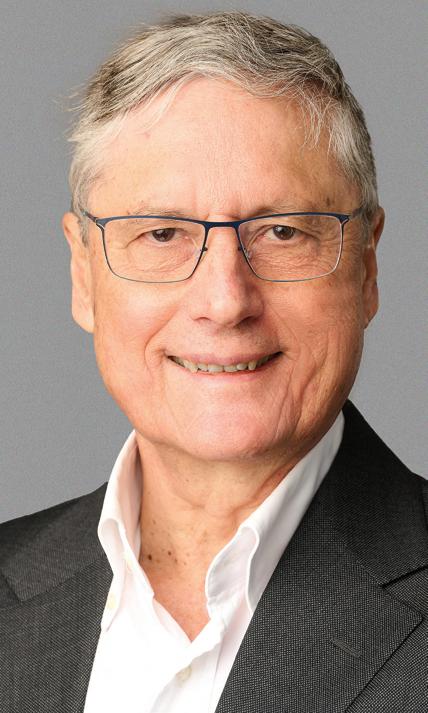
the fundamentals of business and financial analysis.
While most firms are moving toward the use of third-party mutual funds and ETFs in portfolio construction, South Street possesses this research capability, and it also has the ability to identify undervalued investment opportunities that fit its clients’ financial picture.
Carhart comments, “For instance, restructuring inherited and legacy positions is a particular strength of our firm because of our ability to carefully evaluate existing security positions.”
What has inspired clients to remain with South Street for so long is the firm’s holistic approach that applies the same investment criteria to allocation decisions across multiple asset classes and security selection for equities, bonds, and other publicly traded instruments.
The firm’s portfolios only hold individual securities that have been fully vetted and researched by its experienced investment team. Separate algorithms are employed to screen the universe of yield, growth, and technology stocks. Depending on their income and risk profiles, clients often hold a variety of securities, from



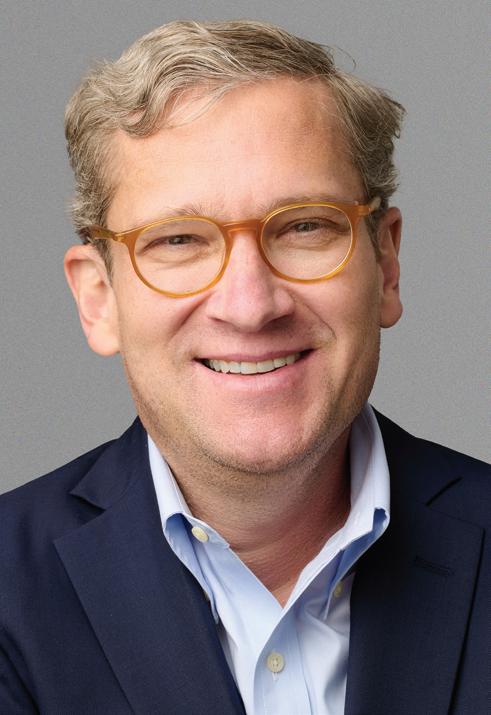
traditional common stocks and bonds to publicly traded master limited partnerships and goldbullion-backed ETFs.
“While securities are drawn from a universe of over 19,000 companies, we are a concentrated manager that typically holds 25 to 30 issues in our clients’ equity component,” says Carhart. “Candidates for in-depth fundamental business analysis must pass a set of rigorous screening criteria that have tended over time to be reliable indicators of future business and nancial success.”
The key building block in South Street’s process is earning the trust of all new clients by ensuring that their visions align. Early discussions focus on return expectations, income requirements, and risk tolerance.
Carhart says, “Based on these conversations, we will model projected investment returns, income generation, and capital appreciation for a number of different portfolio mixes over a 10-year time frame. After further discussion, we agree on a set of guidelines that often are summarized in an
investment policy statement. These guidelines are not static but can change along with the client’s evolving nancial picture.”
Another fundamental of South Street’s approach is a give-and-take relationship between the rm and the client, which reinforces the trust critical to success.
“In our view, talk about trust and personal relationships means little if a client doesn’t see market-beating gains in portfolio value over time. Our disciplined investment process helps position our clients to reap the bene ts of rising securities markets at an appropriate level of risk,” says Carhart.
Due to its longevity, record of success, and satis ed clientele, South Street is a rm comfortable in its own skin.
Stephen Owen, principal, adds, “At the end of the day, many individual wealth managers tout personal service, custom portfolio management, and responsiveness, but few can match South Street Advisors’ record of wealth creation since its inception 26 years ago.”
Disclaimer:
in 1998
140 families, foundations, and pension plans served
Global multigenerational clientele spanning 4 continents
8 employees, 100% employee retention since 2007
Typical client relationship is $5 to $25 million in investable assets
The current environment – economic and political – stands to benefit fixed income, and active managers may have a chance to shine
BY EMILE HALLEZ
This year is shaping up to be a good time to be a bond investor – and it is almost unquestionably great for active fixed-income managers.
Largely, worries about volatility and continuing inflation have been pushing up fixed-income fund sales, and rates are much better than they were five or 10 years ago. Last year, even amid outstanding stock-market performance, bond mutual funds and ETFs were in high demand – taxable bond funds outsold the next-fastest-selling category, US equity funds, by nearly three-to-one. Taxable bond funds raked in $482 billion in 2024, more than double what they sold in 2023, largely driven by a resurgence in actively managed funds – a category that bled nearly $400 billion in 2022, data from Morningstar show.
“High quality fixed income is now outyielding cash – plus, you get some of that downside protection,” said Greg Wilensky, head of US fixed income at Janus Henderson.
Going into 2025, the economy is strong, and inflation has returned to historically normal rates. But there is so much uncertainty with the new Republican administration, given the president’s objectives for taxes, tariffs, and immigration, that
fixed income as a category may look increasingly appealing to investors.
While any president has little power over the rate of inflation compared with that of the Federal Reserve, some of the administration’s policies are expected to at least put upward pressure on prices.
“Inflation could be around for a while,” said Paul Olmsted, senior manager research analyst for fixed income at Morningstar Research Services. “That will mean higher yields for longer. The theme that I would think is coming into 2025 … [is] yields are high across the board.”
Unless Congress approves massive cuts in spending, an extension of the Tax Cuts and Jobs Act provisions – or an expansion of tax cuts – stands to increase the national deficit, which is inflationary, observers said. And tariffs, which have been proposed to cover the costs of tax cuts, can simply increase the prices of goods. Further, the expansive deportations of immigrants that appear to already be underway will take away workers in the US and cause a supply shortage.
“Reducing labor supply would be inflationary
from a wage perspective, but these folks are also consuming,” Wilensky said. Effects could be seen in food and housing, where immigrant labor is critical to production. However, the net effect in housing could be a reduction in inflation because of the outsize role of a drop in demand, Wilensky said.
Separately, the White House late last month abruptly halted federal aid, including disbursements for Medicaid, only to reverse the order days later. How that plays out could affect spending and the deficit.
For 2025, the market seems to be pricing in two
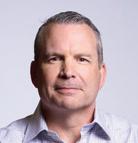
“Inflation could be around for a while…. That will mean higher yields for longer”
PAUL OLMSTED, MORNINGSTAR RESEARCH SERVICES

cuts by the Fed.
“That’s not much. It’s certainly far fewer than what we thought it would be coming into the year. Short rates will stay high. Inflationary pressure will also keep long-term rates relatively high,” Olmsted said. Additionally, fundamentals are largely strong on the corporate side, both highyield and bank-owned, he noted. On the consumer credit side, despite some deterioration in assetbacked securities, bond managers have been conservative in what they’ve been buying, he said. It helps that housing prices have stabilized, he noted.
“We’re now at a point where there are fewer than two cuts priced in for 2025. We now think the market has swung back to the point where we are comfortable having more interest rate risk in our portfolio,” Wilensky said. “[Expecting] two cuts is being too conservative at this point. There is room for rates to rally more…. If we’re wrong, we still have a soft landing as our base case.”
And there are some indications that inflation could remain low this year, at least based on Consumer Price Index data, State Street chief investment strategist Michael Arone wrote in a recent paper. Part of that is due to figures from the first quarter of 2024, when inflation was higher than expected, falling off of the year-over-year data quickly, Arone wrote. Additionally, owners’ equivalent rent, a major piece of the CPI data, has started cooling, he said.
“Inflation could come in lower than expected in 2025, giving the Fed greater wiggle room to cut rates more than anticipated. At 4.25 to 4.5 percent, the target range for the federal funds rate remains sizably above the Fed’s preferred measure of inflation, providing it ample room to cut rates further,” he wrote. “If the Fed’s end game is to have a real policy rate about 100 basis points above inflation, it could easily cut rates three times and by 75 bps in 2025.”
And amid uncertainty at home and abroad politically and economically, there is a higherthan-normal chance of amplified volatility, Wilensky said.
“We actually like that,” he said, noting that markets will overreact to data points, ranging from information from the Fed to social media. “That creates good opportunities for active fixed-income managers.”
Maintaining some liquidity may be wise for
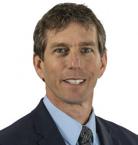
“We’re now at a point where there are less than two cuts priced in for 2025. We now think the market has swung back to the point where we are comfortable having more interest rate risk in our portfolio”
GREG WILENSKY, JANUS HENDERSON
some investors, allowing them to take advantage of opportunities as they arise, he said. With assets in money market funds sitting at nearly $7 trillion, there is a lot of money on the sidelines, he said.
Even as spreads are tight by historical standards and valuations are unattractive, fundamentals and technicals are very positive, he said.
“Most investors are not buying spreads. They’re buying yields,” he said.
Janus Henderson has prioritized higher-quality securitized bonds, and that focus on higher credit quality has now extended to corporates, with
yields being higher than with Treasuries, he said. Having shorter average maturity can also be beneficial if spreads widen, with it being easier to roll into new paper, he said.
A promising path for fixed-income investors, regardless, is to stay invested and diversified and avoid attempting to outsmart the market, Olmsted said.
“Anytime you own one type of security, you do have some concentration risk,” he said. “Stay diversified, and certainly you improve your chances of [weathering] anything bad happening out there.”
In partnership with
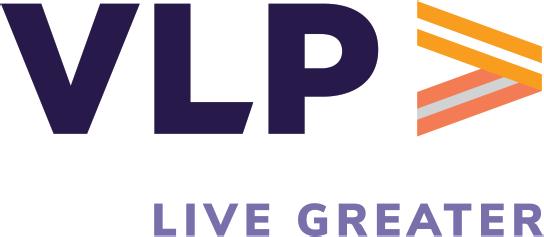
VLP Financial Advisors partner Daniel Lash on fostering talent, mentorship, and growth through George Mason University’s nancial planning program
The nancial planning industry is facing a transition, and it’s not just about market shifts – it’s about people. With a signi cant portion of nancial advisors approaching retirement, there’s a growing urgency to bringing new talent into the eld. Daniel Lash, a partner and nancial advisor at VLP Financial Advisors and an alumnus of George Mason University, is tackling this challenge head-on by shaping a program designed to ll these critical gaps.
As Lash himself noted, the average age of nancial advisors in the US is nearing 57, with a third of them planning to retire in the next decade. “The demand for new advisors is obvious, and it’s growing,” he explains.
Recognizing this gap back in 2016, Lash, then president of the Financial Planning Association’s National Capital Area chapter, took a proactive step. He approached his alma mater with a proposal: create a degree program certi ed by the Certi ed Financial Planner (CFP) Board, one that would equip students with the skills and credentials to step directly into these high-demand roles.
The road wasn’t easy. “It took four years to get the program up and running,” Lash recalls.
State approval processes and curriculum development delayed the launch, but Lash’s vision never wavered. By 2020, George Mason University’s Financial Planning and Wealth Management program was born, albeit with only eight students in its inaugural class.
Today, the program has grown to 57 students, with 14 graduates already having made their way into the workforce. This growth is a testament to the university’s commitment to meeting the industry’s needs and Lash’s determination to ensure the program succeeds.
“We have one of the largest universities in the state in our backyard. The opportunity was there,
and it was about time we did something about it,” Lash remarks.
What sets Mason’s program apart is its alignment with the realities of the industry. Lash and his advisory board, which he chaired for two years, have worked diligently to create a curriculum that doesn’t just teach theory but equips students with practical, real-world experience. Internships at local rms like VLP Financial Advisors provide students with hands-on exposure to the eld, offering them a glimpse into what it truly means to be a nancial planner.
For Lash, the value of real-world experience cannot be overstated. “You can’t know what you don’t know,” he says, re ecting on the importance of internships in bridging the gap between classroom learning and professional practice.
VLP has been hosting interns from George Mason for years, even before the nancial planning program began. Lash’s hope is that these internships will not only bene t the rm but also help students build connections and gain insights into the profession, setting them up for success wherever their careers take them.
The George Mason program is also lling a critical geographic gap. Virginia Tech, long known for its established nancial planning program, is a vehour drive from the nancial centers of Northern Virginia. Lash points out the practicality of having a local option: “Why not have a program closer to where the demand is?” Advisors in Northern Virginia now have a nearby source of young talent to recruit from, making it easier for rms to nd quali ed candidates without going far a eld.
But it’s not just about convenience. The industry as a whole is grappling with an aging workforce, and Lash sees George Mason’s program as part of the solution.
“We’re old,” he jokes, but behind the humor lies a serious point. The nancial planning profession is at a crossroads, and universities like Mason are
Founded in 1996
Average client relationship: 15+ years
Average employee tenure: 10+ years
crucial to training the next generation of advisors who can carry the industry forward.
At the core of Lash’s philosophy is the idea that education should be practical and guided by realworld mentorship. “Find a good mentor,” Lash advises young students. He emphasizes that mentorship has been critical in his own career and is essential for anyone looking to succeed in nancial planning.
The program’s internship opportunities, combined with strong connections to the Financial Planning Association, ensure that students are not only learning from textbooks but are also building relationships with professionals who can guide their careers. Lash’s long-term goal is for the program to have an endowed, full-time director – a CFP who can devote their time to growing the program and helping students navigate the complexities of the industry.
FOSTERING A CULTURE OF
Lash’s commitment to growth is not limited to the George Mason program. At VLP, he fosters a culture
DANIEL LASH
POSITION: Partner and financial advisor
FOUNDED: 1996
BASED: Vienna, Virginia HIGH

that encourages both personal and professional development. “If you’re not growing, you’re dying,” Lash explains, emphasizing the importance of continuous growth for both the firm and its employees. VLP’s tagline, “Live Greater,” isn’t just for clients – it’s a philosophy that extends to the entire team.
He outlines three core values that define the firm’s approach: being growth-oriented, being team-oriented, and maintaining a culture of openness and strong communication. “We want to make sure that our team enjoys what they do and feels empowered to contribute,” Lash explains.
Importantly, VLP operates with a leadership style that welcomes feedback from all levels, creating an environment where ideas are encouraged. “Just because I’m an owner of the firm doesn’t mean I know everything,” Lash admits candidly. “Most financial planners are not necessarily good business owners. We’re good at financial planning, but
“We want to make sure that our team enjoys what they do and feels empowered to contribute”
Daniel Lash, VLP Financial Advisors
running a business takes a different skill set.”
This emphasis on openness has translated into a collaborative environment where employees are comfortable voicing their opinions and offering suggestions for improvement.
From adopting a local highway as part of their community service efforts to offering employees the opportunity to voice their ideas and concerns, VLP cultivates an environment of openness and collaboration.“We want to make sure people love what they do and feel empowered to contribute,” Lash says.
As Lash steps into the role of past chairperson for George Mason’s Financial Planning Advisory Board, his vision for the program remains ambitious. “We want to get to 100, maybe 150 students,” he says, setting his sights on the future.
But growth isn’t just about numbers. Lash envisions a program that is nationally recognized for its excellence, with a full-time director and ample scholarships to support students from all backgrounds.
The George Mason program reflects the changing needs of the financial planning industry, offering a solution to the talent shortage while providing students with the tools they need.
For Lash, the goal is clear: to ensure that the next generation of financial planners is well equipped to take the reins, providing clients with the thoughtful, comprehensive guidance that defines the profession.
Mahoney, who guided the Financial Planning Association through a turbulent time in its history, is remembered at the non-pro t that became his calling
BY EMILE HALLEZ
Patrick Mahoney, the CEO who led the Financial Planning Association through a tumultuous time in its history and the COVID pandemic, died Feb. 1 at age 62.
Mahoney had been in treatment for cancer since a diagnosis in 2022, according to the FPA, which announced that its chief operating of cer, Dennis Moore, is serving as interim CEO.
Mahoney, who himself started as CEO of FPA on an interim basis, quickly fell in love with the organization and its mission, he told InvestmentNews during a podcast in 2020.
By the time Mahoney joined FPA, its membership numbers had been sliding for years and its relationships with stakeholder organizations had become tenuous. FPA made budget adjustments during a dif cult time, and Mahoney pledged to make the non-pro t relevant for nancial planners across the different stages of their lives and careers.
“I’m all about the windshield, not the rearview mirror. So, I’m less concerned about what people may or may not have done before my arrival,” he told InvestmentNews at the time.
“I’m more focused on what we’re going to do going forward.”
Although Mahoney came into the role thinking it would be temporary, he soon found it to be his professional calling, FPA president Paul Brahim said.
“He was an extraordinary man,” Brahim said. “This wasn’t just a job. This was a passion, a purpose – a why.”
Having genuine interactions with people was important to him, Brahim said.
“He developed great personal relationships with people. I can’t remember an exchange with him that didn’t begin with a sincere question: ‘How are you doing?’” he said. “He was always deeply concerned for everyone’s personal welfare. Not all executives are that way.”
Mahoney came to FPA from the Institute of Electrical and Electronics Engineers, and before that he worked for S&P Global Ratings.
Separately, he held four patents related to court records ling. He was also a board member at Saint Joseph’s University Haub School of Business. Mahoney, who was the rst










grandchild of Irish immigrants, at one point took an interest in genealogy. He traveled with his children within the US and in Ireland to nd out more about his grandparents, according to an obituary posted on Legacy.
He and his wife, Lesley, settled in New Rochelle, New York, in the







at the churches he attended. He excelled at cutting through tension, something that was invaluable at an organization facing changes and challenges, Brahim said.
“He had an uncanny way of being in the midst of a very serious conversation and nding an element that could be
“He was always deeply concerned for everyone’s personal welfare. Not all executives are that way”
PAUL BRAHIM, FINANCIAL PLANNING ASSOCIATION
early 90s and had four children: Grace, Olivia, Madeleine, and Patrick Mahoney Jr. As a proud family man, he talked fondly of his children’s successes, and he brought Lesley to meetings on occasion, Brahim said.
He was also deeply spiritual, a trait that helped give him con dence in his professional life and a presence in personal interactions, without a hint of preachiness, Brahim said. Mahoney was a lector and Eucharistic minister
humorous,” he said. “You could always count on him to nd the right moment to do that.”
During his time leading FPA, he helped improve relationships with stakeholder groups, including the CFP Board, NAIFA, and NAPFA, Brahim said. One long-running project was building a strategic plan for FPA that debuted last year, he added.
“He truly wanted the organization to succeed well beyond his tenure.”
Recent natural disasters show the importance of being ready nancially for worst-case scenarios
Devastating hurricanes in North Carolina and wild res in southern California have become a stark reminder of how quickly disaster can strike – wreaking havoc on homes, businesses, and lives. While we can’t predict when or where such catastrophes will occur, we can help our clients prepare for the unexpected, minimizing the nancial and emotional strain they may face if disaster strikes.


As nancial advisors, we often prioritize our focus on growing wealth, diversifying investments, and aiming to help our clients secure nancial futures. However, it’s equally important to help them prepare for worst-case scenarios. Though we can never anticipate every disaster, taking steps to protect their nancial security in advance can make all the difference when the unthinkable happens.
Here are the ve steps advisors can walk through with their clients so they will be prepared to navigate the unexpected:
1. Assign clear responsibilities
When disaster strikes, it’s crucial to know who is in charge of managing nances and making decisions. Clients should have a plan for who will step in to handle their nancial matters if they are incapacitated or personally unable to manage them. This may include naming a trusted family member, an attorney, or a nancial professional to take charge in a crisis.
Work with your clients to outline a succession plan that designates decision-makers in various situations. This ensures that no matter what happens, there’s always someone with
the knowledge and authority to act on their behalf.
2. Ensure liquidity
During a catastrophe, having access to cash can make a world of difference. Whether it’s for immediate expenses, repairs, or just getting through the initial stages of recovery, liquidity provides the exibility needed to navigate a crisis. Help your clients build an emergency fund that can cover at least three to six months of living expenses. Additionally, review their lines of credit and other liquid assets to ensure they have easy access to funds if needed. The more prepared they are nancially, the easier it will be to handle unexpected challenges.
3. Manage debt
Debt, particularly when tied to personal guarantees or business loans, can become a signi cant burden during a crisis. It’s essential for clients to understand the risks associated with their debt, especially any contingencies or clauses that could be triggered by a catastrophic event.
Work with your clients to assess their debt load and guide them toward strategies for reducing it. Whether it’s paying down loans or consolidating debt, minimizing liabilities can help provide the nancial breathing room needed during a crisis.
4. Simplify nancial structures
Complex nancial structures can create confusion and make it more dif cult to respond quickly when disaster strikes. Encourage your clients to simplify their nancial lives where possible. This could mean consolidating accounts, eliminating unnecessary investments, or streamlining their insurance coverage. By reducing complexity, clients will have a clearer understanding of their nancial picture, which will make it easier to act decisively in a crisis.

5. Ensure transparency
In a crisis, information is power. Clients should have easy access to their important nancial documents, account details, insurance policies, and other essential records. Make sure they know where everything is stored, ideally in the cloud, and that trusted family members or advisors have access as well.
You can help by organizing their nancial documents and passwords to ensure they have both physical and digital copies stored securely. Providing transparency reduces stress and helps ensure that important decisions can be made quickly, when every second counts.
While it’s second nature for advisors to prioritize growing wealth and planning for the future, it is just as important to prepare for the unexpected. Natural disasters, health emergencies, and nancial setbacks are often unforeseen. But having a plan in place allows clients to respond with clarity and con dence.
By addressing these ve key areas – accountability, liquidity, debt management, simplicity, and transparency – you can help your clients build resilience and peace of mind in the face of uncertainty.
“While it’s second nature for advisors to prioritize growing wealth and planning for the future, it is just as important to prepare for the unexpected”
Planning for the worst doesn’t mean expecting it. It simply means ensuring that they’ll be better equipped to handle whatever life throws their way. Encourage your clients to take these steps now. While the hope is that these preparations will never be tested, having them in place can prove to be invaluable if and when disaster strikes. The goal is to ensure your clients are as prepared as possible, so in the event they need to take action, they have the tools to recover and rebuild with strength and resilience.
Joe Duran is managing partner at Rise Growth Partners, the ultimate growth partner for exceptional advisory rms.

A FINRA Dispute Resolution Services panel on December 26 awarded a Wells Fargo Advisors client $3.4 million in damages and costs in a claim that centered on his elderly mother’s position in stock of Aflac.
In 2023, the client, Tony Mathis, sued Wells Fargo Advisors and financial advisor Stephen L. Smith.
According to the BrokerCheck
report for Smith, the claim against Wells Fargo Advisors alleged “inaction to prevent unauthorized trades in the account of their elderly client with declining health.”
“We take the protection of our clients seriously, and we respectfully disagree with the panel’s decision,” a Wells Fargo Advisors spokesperson said.
RAYMOND JAMES FINANCIAL
disclosed in January another round of potential penalties totaling as much as $40 million.
“The $40 million is not pegged to any specific, anticipated judgment or expense,” a Raymond James spokesperson said.
AT NAPLES Global Advisors, an RIA based in Florida, investment strategy is as much about exploration as it is about numbers. John Suddeth, chief investment officer and founding principal, is proud of the firm’s unique blend of institutional rigor, personal client focus – and, crucially, geographical open-mindedness.
of compelling opportunity set,” Suddeth explains. “Australia is two-thirds the size of the US, with a population the size of Florida – about 25 million people. They’re market-savvy, and the opportunity when we go to visit companies there … opens your eyes to its physical size, the pace of activity, and the wealth.”
Edward Jones’ effort to go upscale means more
Raymond James agreed to settle the communications matter with the Securities and Exchange Commission and pay $50 million.
The Raymond James spokesperson added that this disclosure was not related to off-channel communications at the firm.
Last year large brokerage firms were hit with tens of millions of dollars in penalties due to staff using unsupervised technology such as text messages t o communicate.

of the CFP designation, a gold standard for advisors.
“Some of that’s been my experience at trust companies like Northern Trust, and then, on the institutional side, working for the Alfred DuPont trust,” he says, adding that their approach integrates global insights into portfolios tailored for high-net-worth clients.
This commitment to a global perspective is not superficial. Since its founding, Naples Global Advisors has conducted on-the-ground research in over 30 countries.
“Ultimately, if you don’t go [to the country], you don’t [understand] the type
This international outlook is not a departure from US investments but a complement. While about 75 percent of the firm’s exposure remains in the US, global exploration uncovers gems that can enhance portfolios.
“You just have a lot more discovery,” Suddeth adds, emphasizing how these insights often provide access to undervalued or overlooked opportunities abroad.
Yet investing internationally comes with challenges. Suddeth is acutely aware of the risks tied to emerging
EDWARD JONES’ recent focus on boosting advisors’ credentials is paying off, with the firm reporting more than 1,000 financial advisors and home office employees gaining the CFP designation in 2024.
The Certified Financial Planner Board of Standards is in charge
Nearly 5,000 advisors and credentialed home office employees now hold the CFP designation, the firm stated. “I would hang my hat on that if I were Edward Jones,” said one industry executive who spoke privately to InvestmentNews about the firm. “The industry needs a greater barrier to entry beyond the Series 7 exam.”
THE EFFORT by the Securities and Exchange Commission to get the financial advice industry to focus on the interest big firms pay to clients for cash took another turn last month, when it penalized Wells Fargo Advisors $35 million and Merrill Lynch $25 million for not paying clients appropriate interest in advisory accounts.
According to the SEC, the difference between the interest paid to customers by the two wirehouses on cash and the yield in other cash sweep programs was almost four percent.
“These penalties are certainly significant enough to draw the big firms’ attention,” said Sander Ressler, managing director of Essential Edge Compliance Outsourcing Services.
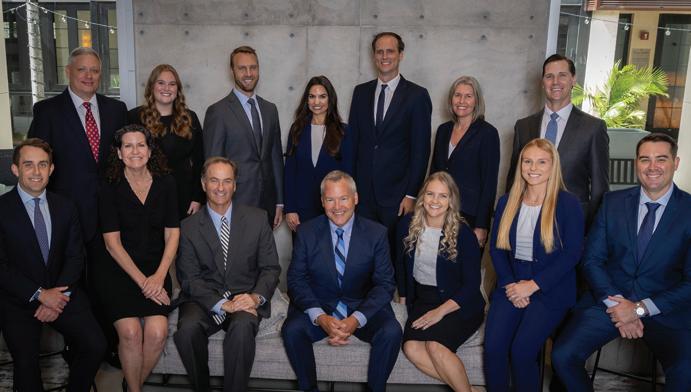
“Ultimately, if you don’t go [to the country], you don’t [understand] the type of compelling opportunity set”
JOHN SUDDETH, NAPLES GLOBAL ADVISORS
markets, particularly regions like China and Taiwan.
“Emerging markets come with political risks,” he says, pointing to China’s dominance in emerging market indices, which, combined with Taiwan, accounts for over 40 percent of the sector. For Naples Global Advisors, engagement in these areas is limited unless the opportunity is compelling and aligns with clients’ risk tolerances.
“We don’t have to be in the emerging markets unless it makes sense,” he explains.
Suddeth acknowledges that today’s economic climate has engendered
WELLS FARGO & CO.’S multi-year plan to support and build its independent broker and advisor channel is to keep on rolling in 2025, according to the bank’s chief financial officer, Michael Santomassimo.
Wells Fargo Advisors is the broad marketing umbrella for close to 12,000
skepticism toward global investments, particularly regarding emerging markets. But for Naples Global Advisors, it’s not about chasing trends – it’s about informed decision-making.
“Is it compelling? Does it make sense to be there?” he asks, reinforcing the firm’s deliberate approach to portfolio construction.
The hands-on philosophy also helps foster trust with clients. By marrying institutional insights with personalized strategies, Naples Global Advisors sets itself apart in the wealth management landscape.
“It’s about discovery,” Suddeth says.
bank advisors, wealth management advisors, and independent advisors.
Wells Fargo’s direct competitors do not allow financial advisors to work as independent brokers and investment advisors.
“We are also focused on onboarding more independent advisors as we continue building out our independent brokerage channel,” Santomassimo said January 5 during a conference call with analysts to discuss the bank’s fourth-quarter earnings.

Senior executive at B. Riley’s RIA latest to bolt
B. RILEY FINANCIAL has been losing financial advisors, executives, and investment bankers for months, as the firm’s stock price has plummeted amid turmoil and bad news.
The latest loss is one of its registered investment advisor’s senior executives, Thomas Kowalczyk, whose title was president of B. Riley Wealth Advisors Inc., with $7.6 billion in
client assets.
His employment at B. Riley Wealth Advisors ended in December.
“Could he eventually convince more B. Riley advisors to move elsewhere?” asked a senior brokerage executive who spoke confidentially about the matter. “I don’t know.”
Mike Mullen remains the CEO of B. Riley Wealth Advisors.

Analyst cites LPL, Robinhood, Wells Fargo as top picks
2024 WAS a blistering year for the stock market, with the S&P 500 returning 25 percent, including dividends.
And Steven Chubak, managing director of Wolfe Research, likes what he sees for the brokerage industry in 2025.
His top picks include the retail brokers LPL Financial Holdings and Robinhood Markets. For
Morgan Stanley wants loan growth, Merrill sells more alts
THIS YEAR started with large wealth management operations revealing strategies to continue to drive revenue. Morgan Stanley wants its financial advisors to increase their
money center banks, Chubak said Bank of America and Wells Fargo & Co. were top picks.
“Following the post-election outperformance of financials, investors are still bullish, with more than 90 percent of our yearend survey respondents expecting financials to outperform the S&P in 2025,” Chubak wrote in a research note last month.

banking relationships with clients, a practice known as cross-selling.
Merrill Lynch, the wealth management arm of Bank of America, is also focused on bringing in new clients amid its recent success in growing loans and sales of alternative investments.
“We’re a bank,” said Ted Pick, Morgan Stanley’s CEO, January 6 during a conference call with analysts to discuss fourth-quarter 2024 earnings. “We lend and we have to do that in the context of deepening relationships.”

THE US Supreme Court heard arguments January 22 in a lawsuit against Cornell University that could make it significantly easier or harder to bring claims against retirement plan fiduciaries.
The petitioners are seeking to reverse a 2023 decision to dismiss claims. The case, filed in 2016, was one in a deluge involving 403(b) plans. At the heart of the
SCOTUS case is whether bringing claims involving record keepers is sufficient to survive a motion to dismiss and get to discovery.
“Whatever we decide, someone’s going to be potentially unfairly treated because … no plaintiff has a way of knowing what all the exemptions are and what potential exemptions the other side could pick,” Justice Sonia Sotomayor said.
JPMORGAN CHASE last week became the latest organization to be sued over its use of employer contributions that workers give up when they leave before being fully vested.
Like in other lawsuits, the plaintiff alleges that the firm breached its fiduciary duty by using forfeited plan assets to offset future contributions for other workers rather than
to reduce expenses for all plan participants.
Last year a case brought against Qualcomm survived a motion to dismiss, marking the first time such a lawsuit made it past a major hurdle.
The cases have caught plan fiduciaries off guard, as they’ve been doing what they’ve been explicitly allowed to do by the Treasury Department and IRS for years.
REPUBLICAN SEC Commissioner
Mark Uyeda has been named acting chair of the agency following former chair Gary Gensler’s resignation.
The White House confirmed Uyeda’s appointment on January 21, the day after President Donald Trump’s second inauguration.
Uyeda, who joined the SEC in June 2022, has been an outspoken critic of Gensler’s regulatory approach.
The same day, the SEC announced the formation of a task force for a clearer regulatory framework for cryptocurrencies.
The group is led by Republican Commissioner Hester Peirce and is designed to address long-standing concerns over regulatory ambiguity in the crypto space and develop practical solutions for market participants.
VANGUARD IS set to pay $106.41 million to settle charges from the Securities and Exchange Commission for reportedly making misleading statements regarding its target date retirement funds.
The SEC said Vanguard misled investors with respect to capital gains distributions and resulting tax consequences for retail investors who held those target retirement funds in taxable accounts.
The SEC order cited Vanguard’s decision in December 2020 to lower the minimum investment for its institutional target retirement funds from $100 million to $5 million.
That move led to widespread redemptions among retirement plan investors, who switched from Vanguard’s investor target retirement funds to the institutional products, which came with lower costs.
To meet the demand from redeeming investors, the SEC said Vanguard’s investor target-date funds had to sell underlying assets that had appreciated
A FOUR-year investigation by state regulators has left Edward Jones with a $17 million penalty resulting from overcharging certain customers for mutual fund sales fees.
The North American Securities Administrators Association has announced the settlement, related to customers paying front-end loads for
in value. The retail investors who stayed in the funds and held shares in taxable accounts were effectively punished, the SEC explained, as they faced significant tax liabilities from higher-than-normal capital gains distributions.
The SEC also found that the 2020 and 2021 prospectuses for its investor target retirement funds were materially misleading. While they stated that capital gains distributions could vary due to “normal” investment activities, the documents failed to disclose the risk of elevated distributions stemming from the redemptions by newly eligible investors switching to lower-cost institutional funds.
The SEC concluded that Vanguard lacked adequate policies to ensure the accuracy of its disclosures.
“Materially accurate information about capital gains and tax implications is critical to investors saving for their retirements,” Corey Schuster, chief of the SEC’s Division of Enforcement’s asset management unit, said in a statement. “Firms must ensure that they

class A shares who later switched from brokerage to fee-based investment advisory accounts, making investment advice to retirement accounts subject to a fiduciary standard of care under the 2016 US Department of Labor fiduciary rule. Those affected were some customers who sold or moved their mutual fund shares sooner than anticipated. A working group of 14 state regulators discovered gaps in the firm’s supervisory process.

COREY SCHUSTER
“Materially accurate information about capital gains and tax implications is critical to investors saving for their retirements”
COREY SCHUSTER, SEC
are accurately describing to investors the potential risks and consequences associated with their investments.”
As part of the settlement, Vanguard agreed to be censured and to cease and desist from future violations. The $106.41 million penalty includes $18.2 million in disgorgement and interest, a $13.5 million civil penalty, and payments
MORGAN STANLEY, Citigroup, and Bank of American terminated their memberships in the Net-Zero Banking Alliance, joining a wave of Wall Street firms that recently quit.
The country’s biggest financial firms find themselves the targets of Republican campaigns that have characterized net-zero groups as climate cartels that boycott the oil and gas industry.
Texas and other states have sued BlackRock, Vanguard, and State Street
that will satisfy $92.91 million in relief ordered through settlements with states, including New York, New Jersey, and Connecticut.
The settlement comes in addition to $40 million that Vanguard agreed to pay to resolve a separate investor class-action lawsuit in federal court in Pennsylvania, according to the SEC.

for allegedly breaching antitrust laws by using investment strategies to suppress the supply of coal.
Recently, BlackRock similarly announced it would end its participation in the Net-Zero Asset Managers initiative, a major blow to that climate group.
A COMBINED $63.1 million in fines were handed out to 12 firms to settle charges resulting from firms failing to maintain and preserve electronic communications.
SEC investigations found failures to ensure compliance involving personnel including supervisors and senior managers. One firm selfreported to the SEC and received a penalty of $600,000 rather than the
THE FINANCIAL Industry Regulatory Authority ended 2024 with penalties against the brokerage arms of large banks and financial institutions for a variety of technical and trading issues, ranging from sending mistaken

far larger fines paid by others.
Some of the other firms involved include Blackstone, KKR, Charles Schwab, Apollo Capital Management, Carlyle Group, TPG Capital Advisors, and Santander US Capital Markets.
trade information to customers to filing inaccurate Focus reports, an important listing of a firm’s financial information that includes its net capital.
The settlements included the brokerage arms of UBS, Barclays, and Citigroup.
FINRA typically issues a flurry of significant settlements with brokerdealers when the calendar turns from one year to the next; both the self-regulator and the brokerage firms FINRA oversees want to close lingering oversight and compliance issues by December 31.

THE SEC found 10 separate securities law violations by two of Robinhood’s broker-dealers.
Robinhood Securities LLC and Robinhood Financial LLC were found to have run afoul of a range of rules over several years. That included failures to in a timely manner report

suspicious transactions, implement identity theft protections, address cybersecurity risks, monitor offchannel communications, retain brokerage data, and maintain customer communications. Robinhood Securities was also fined over violations related to blue-sheet filings, fractional share trading, and stock lending.
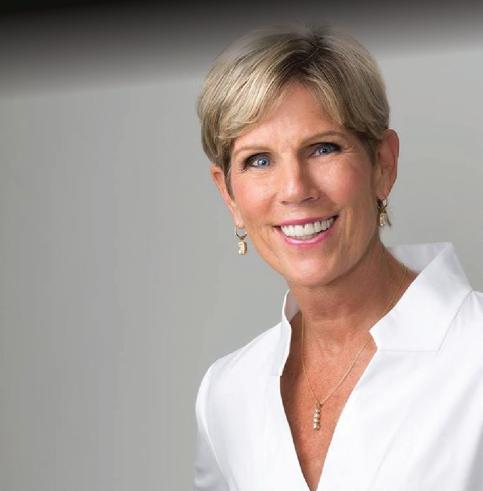
PATTI BRENNAN doesn’t shy away from confronting the political and economic turbulence that colors today’s nancial landscape. “Uncertainty is certainly the word of the day,” she says, but insists it’s nothing new. “There’s always been a crisis or a worry – it’s just part of life.”
Despite this outlook, she recognizes this moment brings a unique level of unpredictability. The answer for clients and advisors? Focus on what can be controlled. “We can’t control politics, what politicians are going to do, scal policy, or the Federal Reserve. So let’s think about what we can control,” the president and CEO of Key Financial, says. “It’s going to be volatile. Just expect it so that when it happens, you don’t panic.”
Recent political decisions, such as the US withdrawal from the Paris Agreement, weigh heavily on the broader investment landscape, particularly for impact investing.
IN ONE of his nal acts from the Oval Of ce, now former President Joe Biden signed the Social Security Fairness Act into law, delivering an increase in bene ts to millions of public-sector workers and their families.
“The fact that Trump just withdrew from the climate agreement – it’s a little disturbing,” she says. “Biden made great strides, and now this is thrown out the window.”
Brennan acknowledges that such shifts create uncertainty for investors committed to sustainability. Yet she urges her clients to stay the course, even in challenging times. “Don’t stop doing well by doing good,” she urges, emphasizing that the goals of environmental and social responsibility are worth pursuing despite the hurdles.
This turbulence highlights the need for a steady hand in wealth management, particularly for high-net-worth individuals.
Brennan works to anticipate her clients’ concerns, offering strategies that are adaptable to evolving circumstances.
“These are smart people, clever people,” she says of her clients. “They’ve been



“I’ve helped over 1,000 people retire and stay retired and never run out of money”
PATTI BRENNAN, KEY FINANCIAL
through cycles before.” Still, even seasoned investors bene t from guidance. Brennan’s emphasis on long-term thinking helps them navigate volatility without losing sight of their goals.
Her approach is particularly effective in addressing transitions, such as retirement, when uncertainty often peaks. “I’ve helped over 1,000 people retire and stay retired and never run out of money,” she says. “You get to do it once. We kind of know the things that could happen and the landmines you want to avoid.”
Economic shifts, like rising in ation and interest rates, are another area in which Brennan’s steady perspective proves invaluable. She doesn’t advocate for reactive changes. “We’re not changing based on in ation or changes in interest rates,” she explains. Quoting John Bogle, she adds, “Don’t just do something; stand there.”
“We go into every day of every year expecting that something bad is going to happen, and we want to set clients up accordingly,” she says.
In a long-awaited decision, a judge found that American Airlines breached its duciary duties of loyalty to plan participants by choosing BlackRock as an asset manager within the rm’s $25 billion 401(k) plan system, “allowing their corporate interests, as well as BlackRock’s ESG interests, to in uence management of the plan.”
The bipartisan legislation, which passed with a majority vote through the Senate in December after winning majority approval in the House the previous month, eliminates the Windfall Elimination Provision and the Government Pension Offset.
Those two provisions had reduced Social Security bene ts for teachers, re ghters, police of cers, and other public-sector workers, as well as their spouses and survivors in retirement, for decades.
PLAINTIFFS IN the rst lawsuit over ESG in a 401(k) just saw a victory that could have enormous implications for asset managers and retirement plans.
It’s unclear whether the plaintiffs will be able to show the court that plan participants experienced any nancial damages from BlackRock’s inclusion and its use of ESG factors in deciding how to vote on proxy ballots. American Airlines could opt to appeal.
“American has never offered ESG investment options in our 401(k) plan,” the company said in a statement.







401(K) PLANS are viewed as the final – and potentially very lucrative – frontier for private equity, and the industry appears poised to get as far into it during the new Trump administration as possible.
In recent interviews, privateequity executives and lobbyists told the Financial Times that they would “hit the ground running” once President Donald Trump assumed office.

FOLLOWING EXTREME wildfires around major cities in California, the Internal Revenue Service has unveiled measures and concessions to help affected taxpayers.
The agency made the

announcement following a disaster declaration from the Federal Emergency Management Agency, which at the time applied only to Los Angeles County.
The economic toll is as high as $250 billion, making it the costliest disaster in California’s history. Taxpayers have until October 15 to make key federal tax filings and contributions to certain tax-advantaged accounts.
Most 401(k) plans have no allocation whatsoever to private equity – only a small percentage include alternatives of any kind. And even among the biggest 401(k)s, less than one percent include private equity as a component of custom target-date strategies.
Just before the end of the year, KKR hired its first head of defined contribution, signaling intentions for that market.
VERIZON BECAME the latest employer to be sued over a pension-risk transfer, with a new twist in the snowballing line of litigation: the insurer called out for allegedly being risky is Prudential.
In a complaint filed in US District Court, plaintiffs in the proposed class action named the plan sponsor, Verizon, as well as the independent fiduciary in the annuity selection process, State Street Global Advisors Trust Company, as defendants.
The case appears to be the first involving a pension-risk transfer (PRT) to Prudential Insurance Company of America. Most of the cases with claims
JOHN HANCOCK sees a big opportunity in the small 401(k) market through financial advisors, with a forthcoming plan service in partnership with Vestwell.
That option, FutureStep, is being rolled out early this year and caters to small employers, thirdparty administrators, and wealth
about PRTs have centered on plan sponsors’ selection of Athene Annuity & Life Co., though that insurer has not been named as a defendant.


management firms.
There are projections for 30,000 new retirement plans forming each year for several years, due largely to state retirement-savings initiatives and tax benefits that are encouraging small businesses and startups to add 401(k)s, said Jack Barry, head of product at John Hancock Retirement.
“It’s almost as if a tidal wave of business is coming our way,” Barry said. “It’s a once-in-a-generation opportunity.”

PONTERA, THE retirementfocused fintech headquartered in New York City, has added another name to its circle of enterprise clients in the RIA space.
In its latest partnership, the fintech firm is partnering with Hightower Advisors, enabling its advisors to manage client 401(k) accounts using its software.
A RULE from the Secure 2.0 Act requiring new retirement plans to automatically enroll workers took
With its capability to manage and report on assets held in 401(k)s, 403(b)s, and other workplacesponsored accounts, advisors can offer more comprehensive service, incorporating tax, investment, and estate planning outcomes as they rebalance investment management strategies across client accounts, Pontera stated.
effect this year, and proposals issued just last week by the IRS and Treasury are sorting out some of the details for plan sponsors.
Most plans established after December 29, 2022, must use auto enrollment, with exceptions for new and small businesses. And companies must comply with the Secure 2.0 rule under “a reasonable, good faith interpretation of the statute,” in the absence of final versions of the Internal Revenue Service and Treasury rules.
Employers will have to abide by the final rules six months after they are published, and it is unclear when that will happen.
JEFF CONCEPCION knows all too well the challenge independent financial advisors face when planning their exit strategies. In his experience, these advisors often struggle to develop the right plan due to a lack of resources and information.
“‘Independent’ connotes that they are on their own,” the founder and CEO of Stratos Wealth Partners explains. “When you ask how many advisors have a formal, executed succession plan in place, usually it’s less than a third. Why? They question what the right structure is, what the right valuation is, and whether it’s the right deal.”
Concepcion’s experience underscores a recurring theme: the lack of a clear, structured approach to succession.
“They think of it more as an event than they do as a process,” he says. “Many advisors make the mistake of
waiting too long to act, often leading to disastrous outcomes. In many cases, if an advisor passes away, broker-dealers have only 30 days to transfer the book to another licensed advisor, which, without a plan, turns into a fire drill.”
The succession landscape is further complicated by an industry in transition, with advisors exploring both internal and external strategies to pass on their businesses. However, developing internal talent isn’t always the silver bullet it appears to be.
“A lot of folks try to develop Gen2, and sometimes the expectations are too high,” Concepcion adds.
Still, fostering talent is critical, particularly given the industry’s current struggles with attracting and retaining young advisors.
“Equity and ownership are certainly a wonderful pathway for doing that,”
SAVVY ADVISORS, a technologypowered RIA firm, started the new year with a milestone, surpassing $1 billion in assets under management.
The affiliated RIA of Savvy Wealth, the digital-first, multicustodial tech platform for financial advisors, revealed that it had tripled its AUM and advisor count over the past year. That record was driven home by

“Many advisors make the mistake of waiting too long to act, often leading to disastrous outcomes”
JEFF CONCEPCION, STRATOS WEALTH PARTNERS
Concepcion says. “However, many firms face an internal conflict between maximizing value and honoring those who have contributed to their success. Often, external buyers can offer significantly higher valuations, while internal stakeholders, such as long-serving employees or family members, may not have the resources to compete with larger firms or private-equity-backed buyers.”
That may leave advisors trying to balance the challenge of wanting to
maximize their retirement value but also honor the team that helped build the firm.
Hybrid solutions often appeal to those in this dilemma, meaning an institutional partner buys a controlling interest at the market rate while allowing internal stakeholders to acquire smaller equity stakes at subsidized valuations.
“The seller still ends up with a great outcome, bringing in institutional talent and expertise,” Concepcion says.
the addition of four experienced advisors in December, which pushed it over the $1 billion line and brought its advisor headcount to 40.

THE 2025 recruitment season has begun at LPL and Raymond James as the two firms announced the newest advisor additions.
John Somerville, a veteran with over 40 years of experience, joined LPL’s employee advisor channel in a newly
opened Linsco office in California.
Along with client service associate Debora McKenzie-Jakushak, Somerville has launched Somerville Wealth Management in Santa Barbara after transitioning from D.A. Davidson & Co.
Meanwhile, Raymond James also bolstered its advisor ranks by welcoming Chris Helton to Raymond James Financial Services, its independent advisor channel.
Operating as Helton Wealth Management in Huntsville, Alabama, Helton also specializes in serving highnet-worth individuals, business owners, and those who are approaching or in retirement.
AS WILDFIRES spread rapidly around the Los Angeles area last month, financial advisors scrambled to reach clients and loved ones.
“The hardest part is that the community just doesn’t know if their houses are still standing – but it appears that a good part of the Palisades is gone,” said Jamie Rugg, vice president of wealth management at Highline Wealth Partners. “We are used to fires in this area, but none of us can recall having one that is this close to the center of the city.”
An immediate challenge for people affected is finding shelter, and longer-term rebuilding will be complicated. Property insurance is problematic for Californians, attributable to the high cost and limitations of coverage. Some, including homeowners in the Palisades, have had to turn to the insurer of last
LPL’S 2025 recruitment drive is continuing on both the east and the west coasts, with new advisors coming in from Raymond James and Merrill Lynch.
The firm announced that financial advisors Larry Forlenza and Carl
ORION HAS announced a new partnership with Snowflake to bring real-time, cloud-based data sharing to its advisory clients.
The collaboration marks Orion’s first integration with Snowflake, enabling advisors to securely access and analyze live data within their existing systems.
The Snowflake technology will initially be rolled out to a beta group of

resort, California’s FAIR Plan.
“A lot of carriers have pulled out of California and have stopped doing business. I worry for people who don’t have coverage or have not renewed,” said Jeff DeLarme, president of Palos Verdes Estates-based DeLarme Wealth Management. “For folks who do have coverage, it’s going to be an arduous process.”
Hanks, who previously oversaw nearly $430 million in advisory, brokerage, and retirement plan assets under management, have joined its broker-dealer, RIA, and custodial platforms from RayJay’s independent advisor channel, Raymond James Financial Services.
Based in Morristown, New Jersey, the duo has reconnected with Morristown Wealth Management, which also transitioned back to LPL from RJFS in October.
Forlenza and Hanks bring decades of experience in the financial services industry, with a focus on tailoring strategies for affluent families, business owners, and corporate executives.

Orion clients in the second quarter of this year, with a broader release to follow.
By using Snowflake’s capabilities, Orion said advisors can eliminate inefficiencies, centralize both structured and unstructured data, and scale their processes to keep up with increasingly demanding data workloads. The platform also includes advanced security features to help advisors address clients’ data concerns while maintaining compliance with industry regulations.
Despite market selloff,
deep-six the bulls, analysts say
HOW DEEP a problem for wealth managers – and the bull market – is DeepSeek?
Investors woke up on January 27 to a sea of red on their screens thanks to a year-old Chinese startup. A report that DeepSeek’s AI models could offer comparable performance to the world’s best chatbots at a fraction of the power and energy costs sent the S&P 500 spiraling down about two percent.
DeepSeek’s potential emergence
sent global technology tumbling, including chipmaker Nvidia, which fell 17 percent during the day.
“Let’s assume, for argument’s sake, the headlines are correct … our suspicion is that DeepSeek will be good for many, if not all, US companies. Lowering the price will increase demand. And companies like Nvidia and Broadcom are already diversified or diversifying their offering,” said Nancy Tengler, CEO and CIO of Laffer Tengler Investments.
A NEW report shines a light on the millions of over-50s who are seeking to improve their fortunes and working lives by making changes in their careers, and the barriers that exist that can make that challenging.
At a time when older people would perhaps be more focused on thinking about retirement, work options that would bring in more money are the No. 1 reason for planning a job change among those who took part in the research by the non-profit, non-partisan AARP. Making a difference and flexible working options round out the top three reasons.

A quarter of respondents said they plan to make a job change this year, up 10 percentage points from a year ago, with 40 percent of these saying that means getting a new job. There has also been a rise in the percentage who plan to start a business, at 16 percent, up from nine percent a year ago.
LPL HAS taken another step in its recruitment efforts for 2025 as a multigenerational advisor duo joins its network in the Pacific Northwest. It welcomed Bart Lewellyn and Alex Lewellyn, a father-son advisor duo, to its broker-dealer, RIA, and
custodial platforms. The pair transitions to LPL from Osaic, where they managed approximately $320 million in advisory, brokerage, and retirement plan assets.
Based in Medford, Oregon, Bart Lewellyn founded Lewellyn Financial Services in 1995 to assist clients in building wealth while aligning with their financial goals. Alex Lewellyn joined the practice in 2012.

IN AN era marked by uncertainty, James Demmert, founder and chief investment officer of Main Street Research, an investment firm in New York City, Sausalito, California and Greenwich, Connecticut, remains focused on identifying signals of a new bull market. After a bear market in 2022, he is confident that certain economic indicators point toward a growth cycle ahead that is still in its early phases.
“A new bull market has begun,” Demmert explains. The clues he sees for this shift hinge on factors such as inflation, Fed policies, and economic resilience in a “Goldilocks economy” –where conditions are neither too hot nor too cold, providing an ideal environment for stocks.
“Once inflation moved below four percent and we saw that the Federal Reserve was close to being finished with its rate hikes in the summer of 2023, we saw that disequilibrium between the economy and the market come into equilibrium.”
Key to Demmert’s approach is analyzing the sectors most likely to benefit from this equilibrium, with technology emerging as a crucial area.
“This is an AI tech-led business cycle,” he says, emphasizing the importance of AI and related technologies in driving productivity and long-term economic growth. This cycle, he believes, is just beginning, and Demmert sees significant investment potential in both the companies building the technology and those implementing AI to enhance operational efficiency. Companies like Nvidia have been early beneficiaries, but he points investors toward the “second derivative” of AI – firms now deploying AI to improve business outcomes, such as Oracle and Salesforce.
“After 18 months of spectacular performance in companies like Nvidia ... it’s time now that investors start to focus on other tech and telecommunications companies,” Demmert asserts, suggesting that these secondary adopters of AI stand to

ACCORDING TO the Society of Actuaries (SOA) Research Institute’s biennial Retirement Risk Survey, rising food costs and daily expenses are significantly affecting 51 percent of pre-retirees and 35 percent of retirees. Meanwhile, rising utility costs are affecting 45 percent of pre-retirees and 29 percent of retirees.
The SOA says this has led more pre-retirees to adjust savings strategies, particularly for individuals with annual incomes of less than $100,000.
“Even though inflation rates have come down, many are still affected by high prices for housing and groceries,” said Anna Rappaport, current chair of the SOA Committee on PostRetirement Needs and Risks, in a statement.
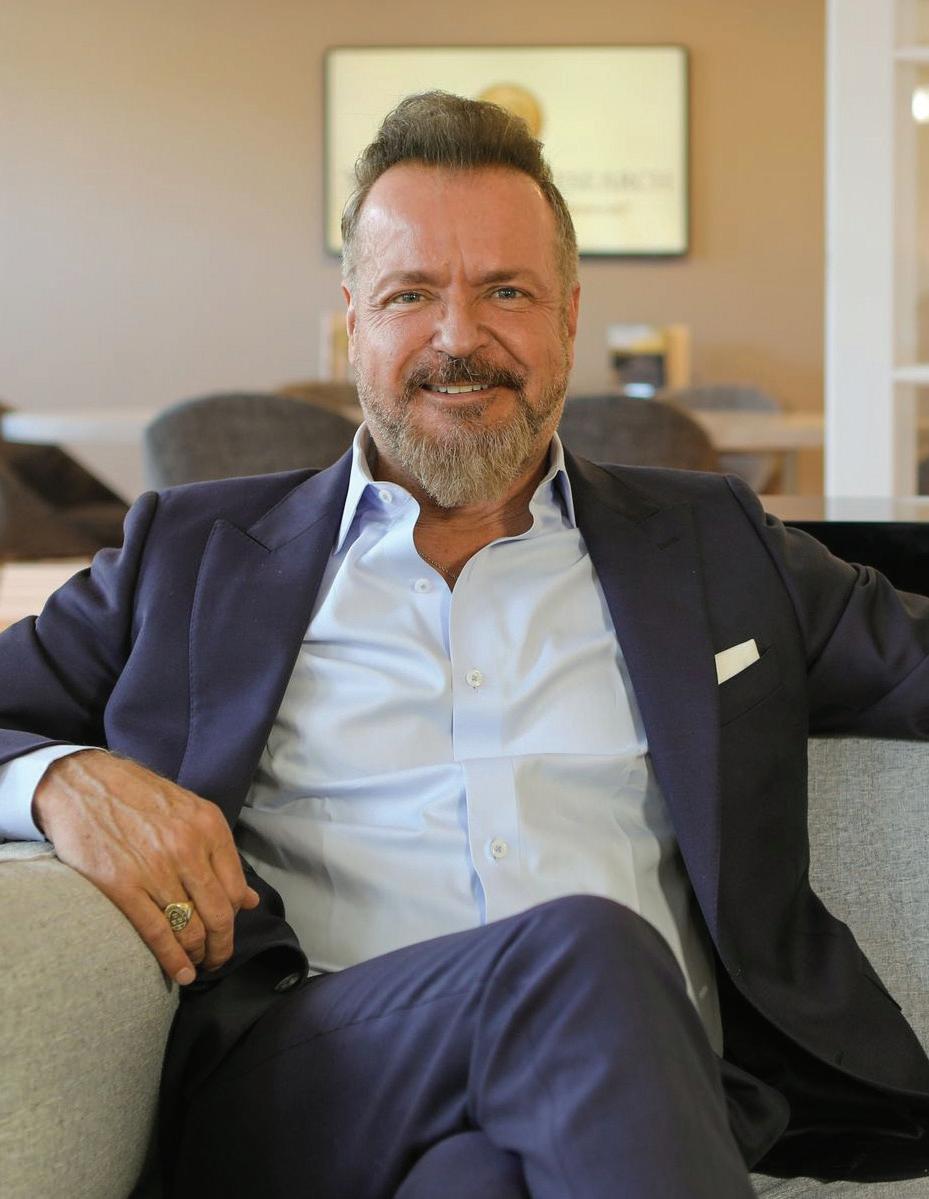
benefit substantially.
However, Demmert’s optimism is tempered by a focus on risk management, underscoring the importance of strategic safeguards in volatile times.
This process involves three components. The first is the flexibility to significantly reduce stock exposure, the second is sector management with a defensive tilt, and the third is carefully placed stoploss orders. Together, these strategies
“A new bull market is underway, but it’s dangerous to think markets can’t be derailed”
JAMES DEMMERT, MAIN STREET RESEARCH
Demmert insists that investors prepare for downturns through a defensive Plan B. His strategy, which he calls “active risk management,” involves setting guidelines for when to reduce stock exposure should unforeseen macroeconomic events, such as rising inflation or geopolitical conflicts, arise.
mitigate the risk of a catastrophic loss in one stock, a sector, or the whole portfolio.
“Let’s have the flexibility to withdraw that stock exposure if the Fed, let’s say, has to raise rates or inflation comes back, or let’s say there’s a conflict in the Mideast,” he advises.
Over half of advisors warming up to crypto after Trump’s election win
IT’S NOT just investors who’ve been swayed toward crypto by Donald Trump’s win at the polls in November. Financial advisors are also increasingly open to the idea.
The seventh annual Bitwise/VettaFi Benchmark Survey of Financial Advisor Attitudes Toward Crypto Assets found that 56 percent of advisors are more likely to invest in crypto in 2025, following the results of the US
presidential election in November. The poll – which drew responses from over 400 financial professionals, including RIAs, broker-dealer representatives, financial planners, and wirehouse advisors – also highlighted a surge in crypto allocations. Within that pool of advisors, 22 percent said they’re now investing in the asset class for clients, double the rate in 2023.

AFTER TWO years of more than 20 percent returns in the broad stock market, financial advisors are once again busy convincing clients to opt for strategies beyond a portfolio of vanilla stocks and bonds.
Look no farther for confirmation that alternative asset managers are making hay than the most recent alternative investment offering by Blackstone, which focuses on investing in infrastructure and is sold by financial
advisors to wealthy clients.
Launched in August, Blackstone Infrastructure Strategies passed an important sales milestone in January, raising over $1 billion so far from clients.
It’s the second straight year that Blackstone has launched a new fund in the alternative investment space and had a hit right off the bat. Last January, the brand-new Blackstone Private Equity Strategies Fund said it had raised $1.3 billion.
IN THE latest example of insurers chasing alternative investment opportunities, Northwestern Mutual has forged an agreement with Sixth Street to invest its assets in a head-turning corner of the private-credit space.
Under the partnership, Sixth Street will be overseeing $13 billion of the insurer’s assets, with plans to invest primarily in asset-based finance.
The deal is emblematic of a broader trend of institutional investors tapping into private credit via asset-backed lending.
As part of the agreement, Northwestern Mutual will acquire a small minority stake of roughly 10 percent in Sixth Street – comparable in size to the holding Sixth Street repurchased from TPG last year.
AFTER A banner year featuring a historic number of launches and a record-setting level of inflows, active ETFs are set to play an even more prominent role in US investments. That’s according to a recent report from analysts at National Bank, one of Canada’s largest lending institutions.
Looking back at 2024, the researchers said US exchangetraded funds hit a significant
milestone, with a record-breaking 700 ETFs launched throughout the year. Active ETFs made up the lion’s share, accounting for 77 percent of total launches, with 565 new products getting listed on exchanges.
The number of active ETFs now stands at 1,840, just 235 short of the number of passive ETFs. “At the current pace, active is expected to surpass passive in the next year or two,” the report read.

A NEW pulse survey by Blackstone suggests a strong focus on private markets among financial advisors in the coming year, with a strong majority planning to raise their clients’ exposure in 2025.
advisors
Out of the 157 advisors surveyed by Blackstone, 79 percent anticipate boosting client allocations to private markets, compared to just seven percent who expect to increase their exposure to fixed income or equities.
According to the alternative asset manager’s Winter 2024 Pulse Survey, the push toward private markets is closely tied to diversification goals, with 55 percent of advisors saying their clients are prioritizing broader portfolio diversification.
“Many recognize that the correlation of stocks and bonds is less reliable than commonly assumed. Private markets can provide portfolio diversification beyond the traditional 60/40 allocation,” the survey noted.
RIA s FELT more optimistic about the economy and stock market following the US election in November, a new study showed.
According to the latest RIA Economic Outlook Index from Security Benefit, RIA sentiment surrounding economic conditions from a range of zero (extremely pessimistic) to 100 (extremely optimistic) rose to 56 in the final quarter of 2024 after having
fallen to 53 in the third quarter.
The survey of 100 RIAs nationwide showed nearly a third (32 percent) of respondents said they were “not at all” concerned or “not too concerned” regarding a major equity downturn in the next 12 months. Furthermore, 20 percent of RIA respondents said they believe that the S&P 500 is likely to see over 10 percent gains in the next 12 months.
AFTER A supremely placid 2024, the stock market is showing a lot more fear thus far in 2025.
That’s got wealth managers poised to soothe jittery client nerves and maybe make some defensive portfolio moves, too. The VIX, or volatility index,

jumped over the 21 level by the second week in January, pushing it over 22 percent year to date. Also known as the market’s “fear index,” the VIX spent the majority of the past 12 months loitering well below 20 as the market methodically churned higher, indicating a low level of investor anxiety. The VIX is constructed from the prices of outof-the-money options written on the S&P 500.


InvestmentNews ’ Special Reports provide an expert-collated resource for the industry when looking for best-in-class partners and the most revered service providers.
The Special Reports also provide an opportunity to honor the top companies and individuals in the industry for their hard work and commitment to innovation. In 2025, InvestmentNews will produce a comprehensive portfolio of Special Reports covering a plethora of topics and agendas that are top of mind for professionals and most pertinent to the industry.

• 5-Star Financial Planners
• 5-Star Independent Advisors
• 5-Star RIA Firms
• 5-Star Technology
• 5-Star Wealth Management Teams
• Best Places to Work
• Fastest-Growing Fee-Only RIAs
• Hot List

• Rising Stars
• Top Advisors
If you would like further details on how to be involved, please get in touch via email at sophia.egho@keymedia.com.


Schwab Retirement Plan Services, Inc., has received the most Best-in-Class awards seven years in a row – nearly twice as many as the nearest qualifying plan provider – as rated in the 2023 PLANSPONSOR ® Defined Contribution Survey. Thank you to all the plan sponsors & consultants for the opportunity to consistently help you shine. Proud & Humbled. Schwab.com/WhyRPS or call 1-888-215-9239.